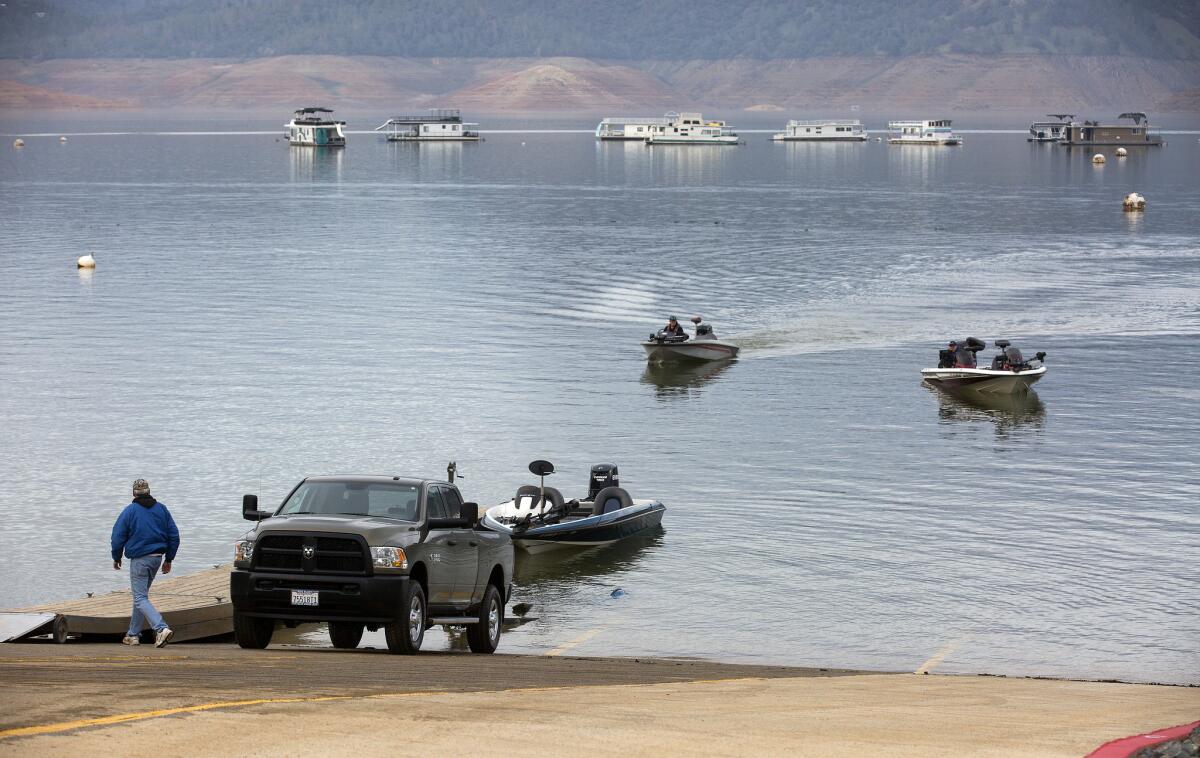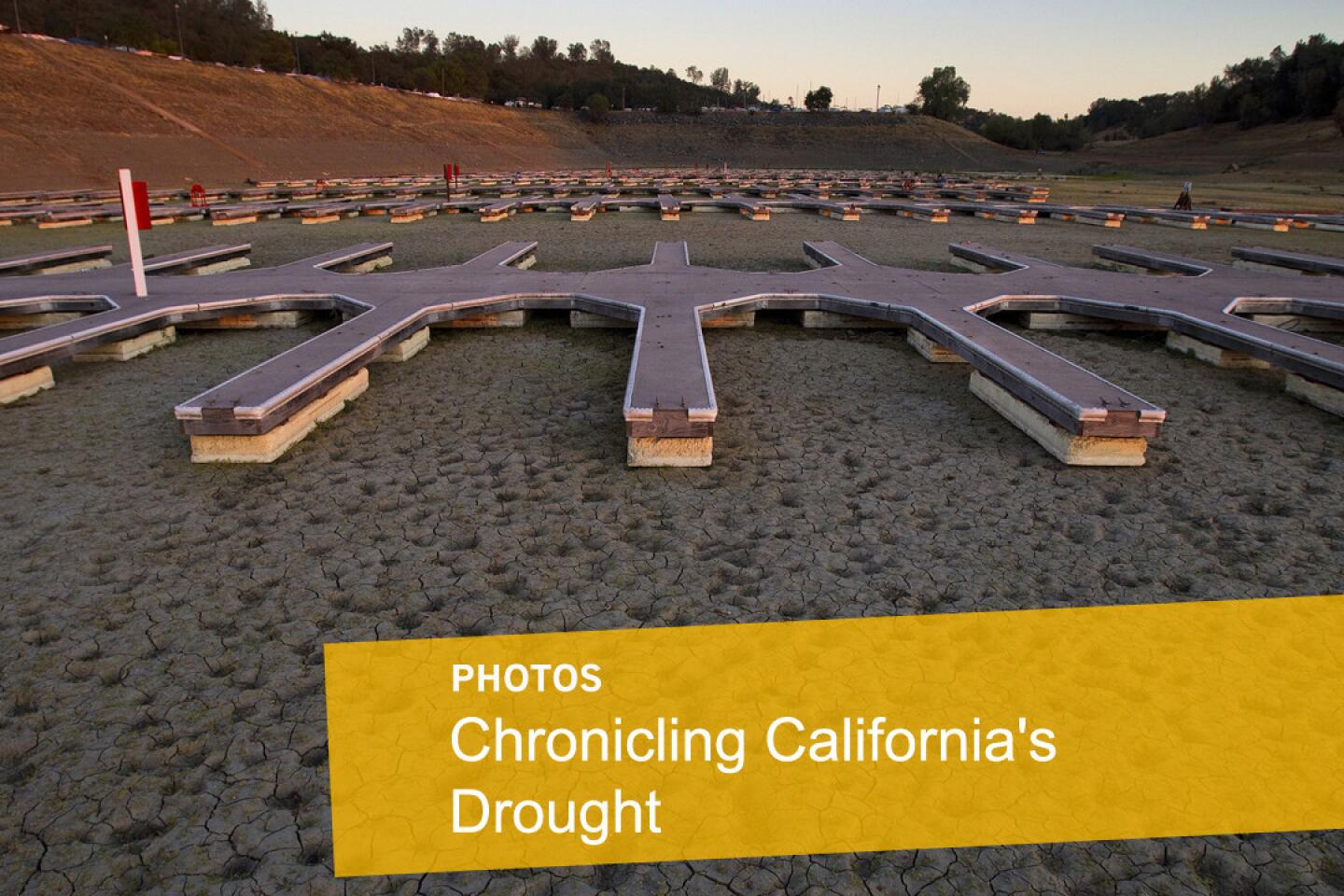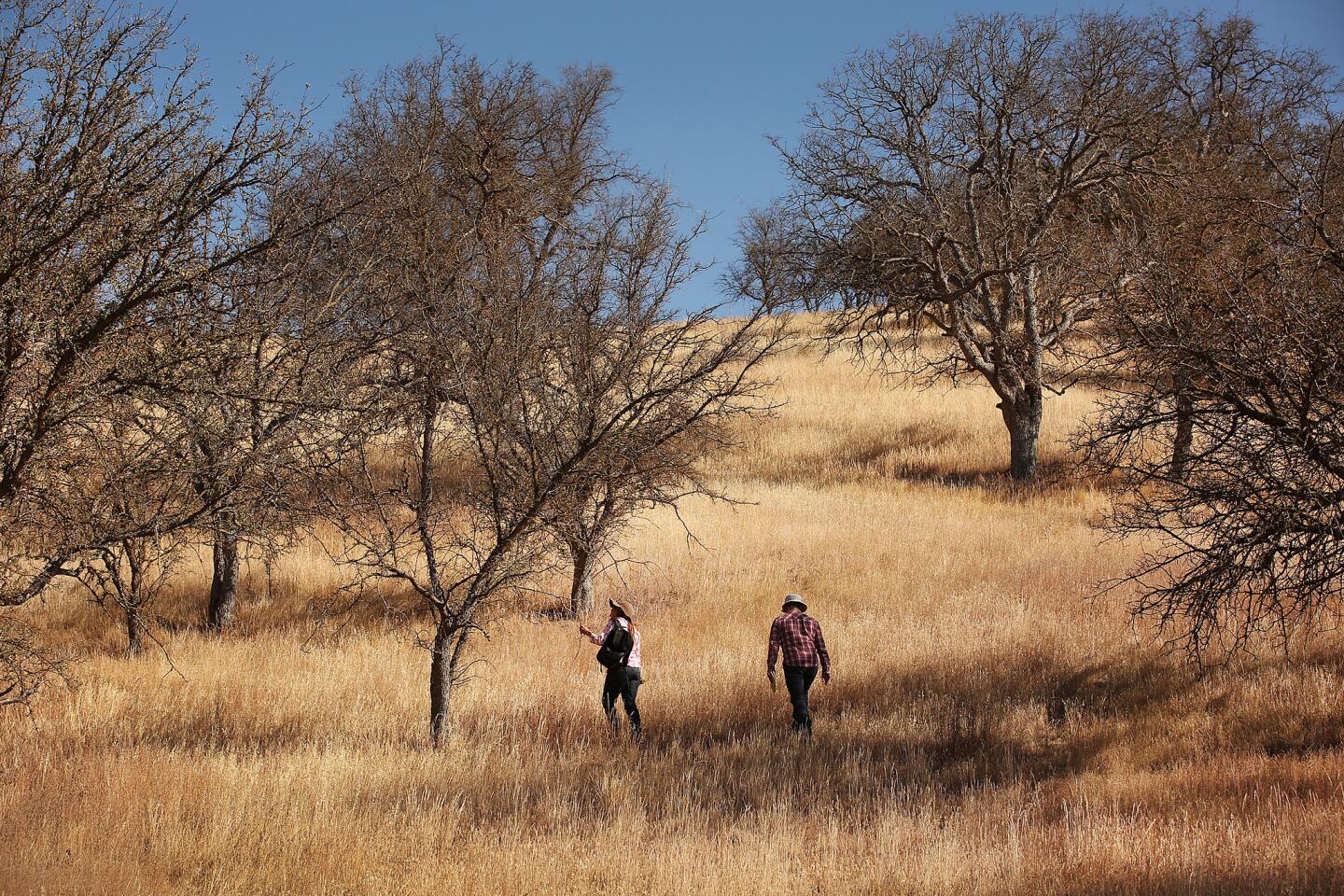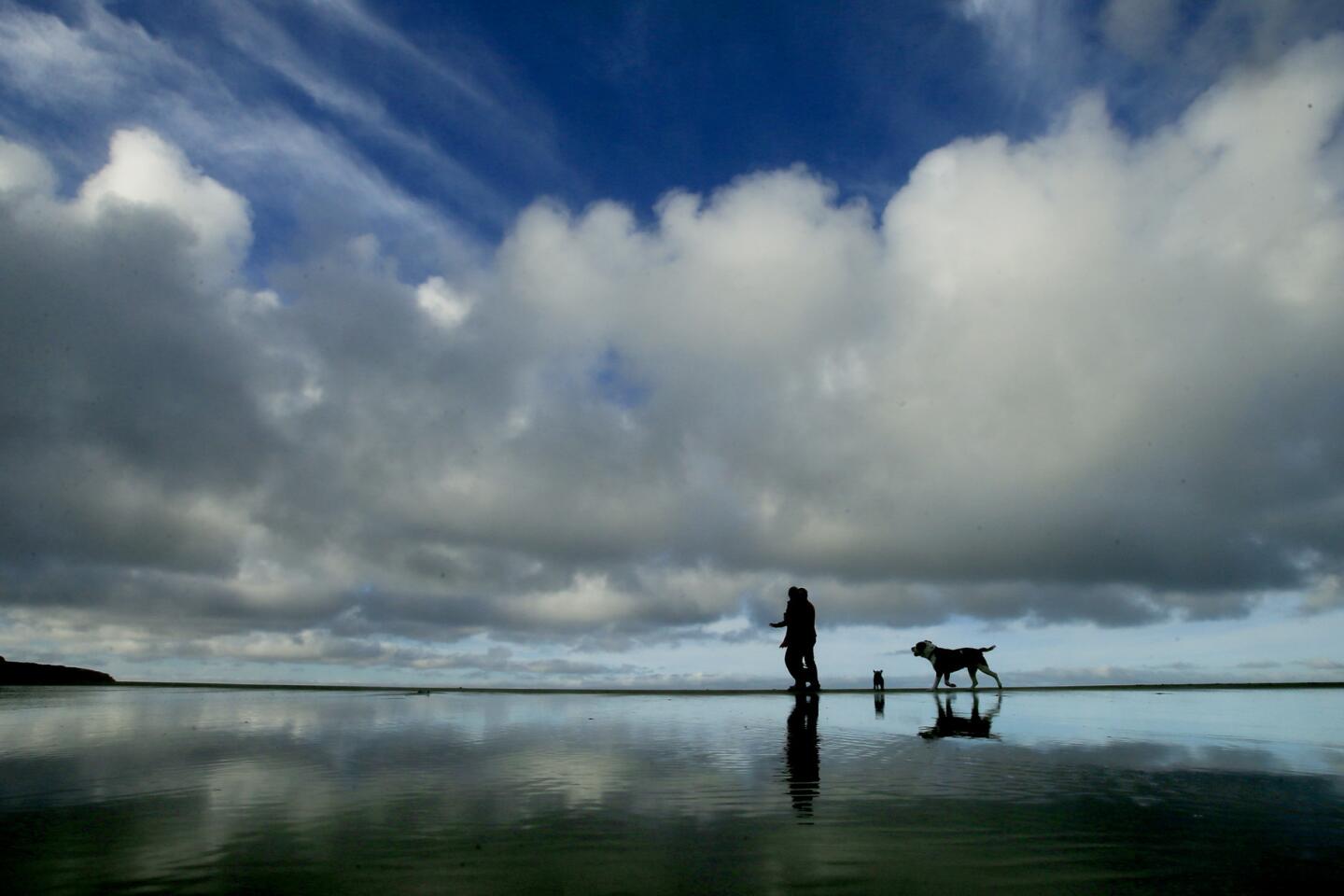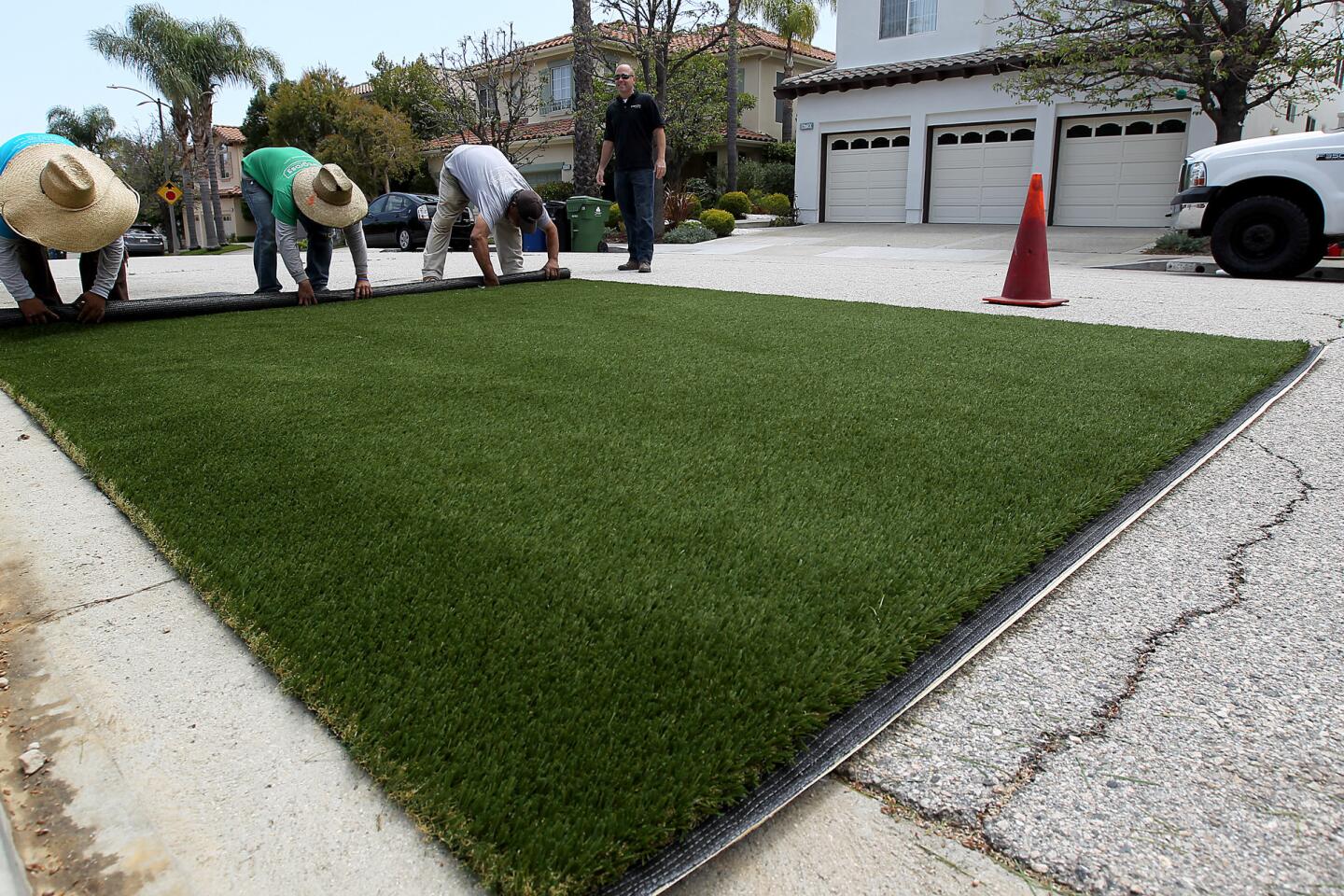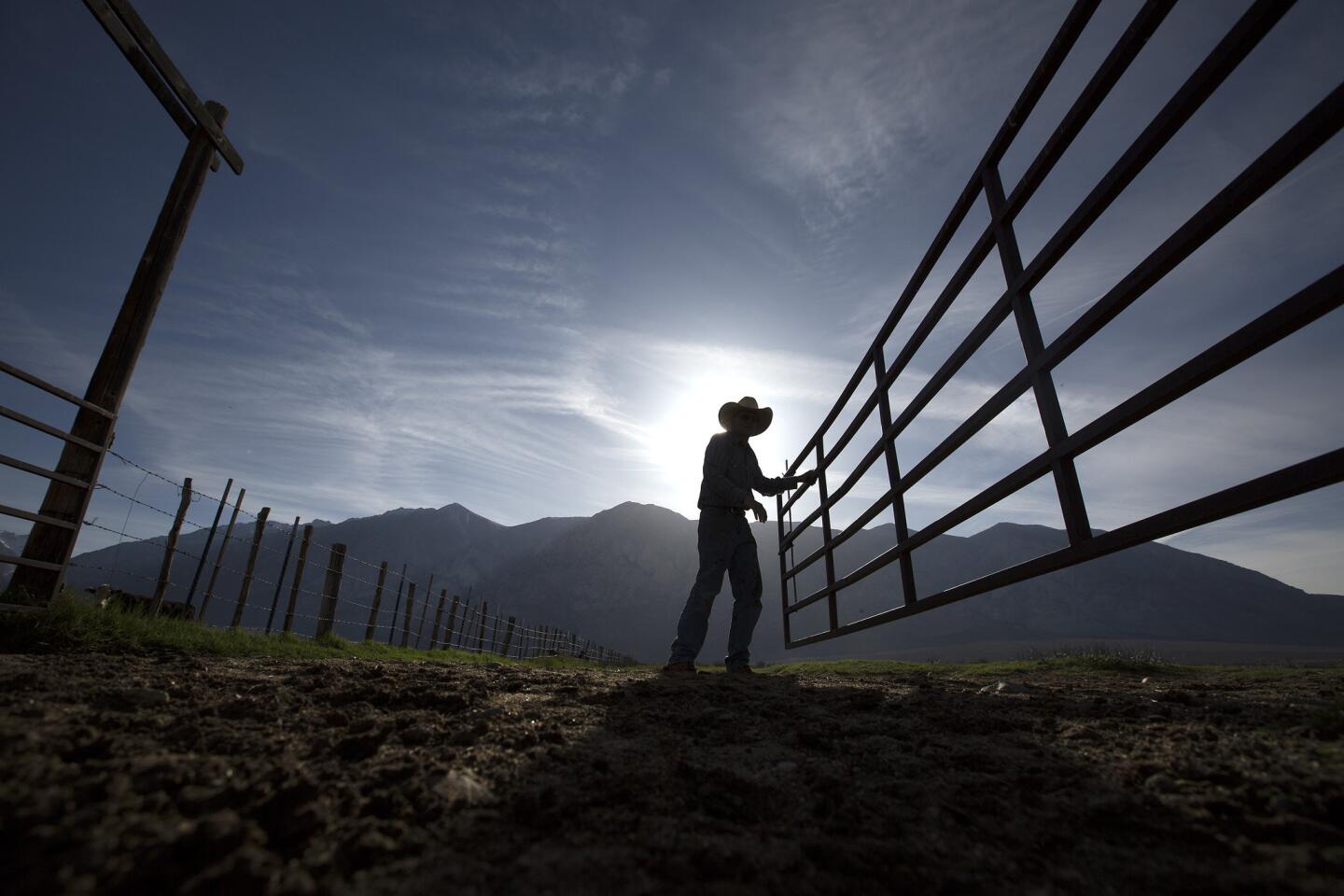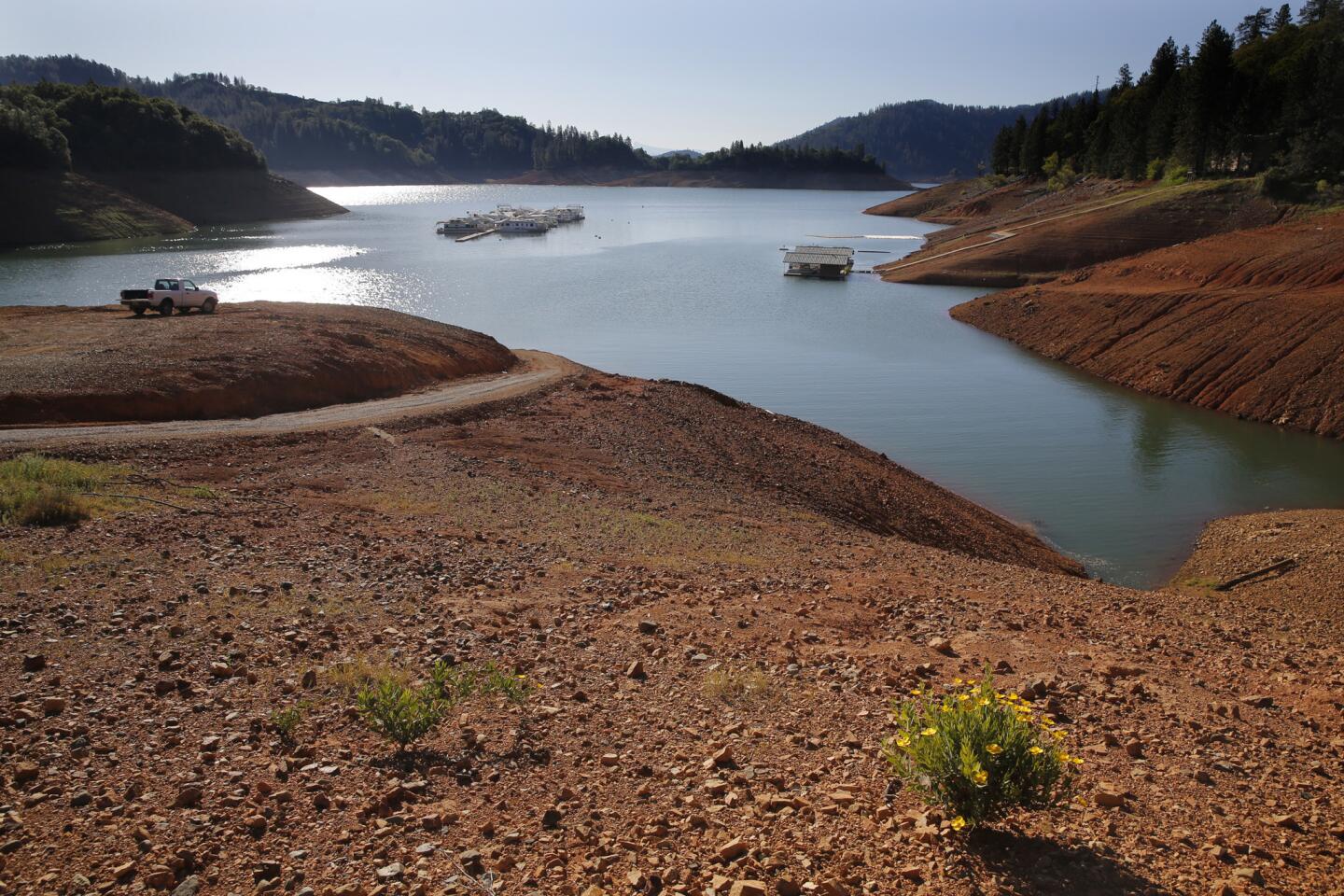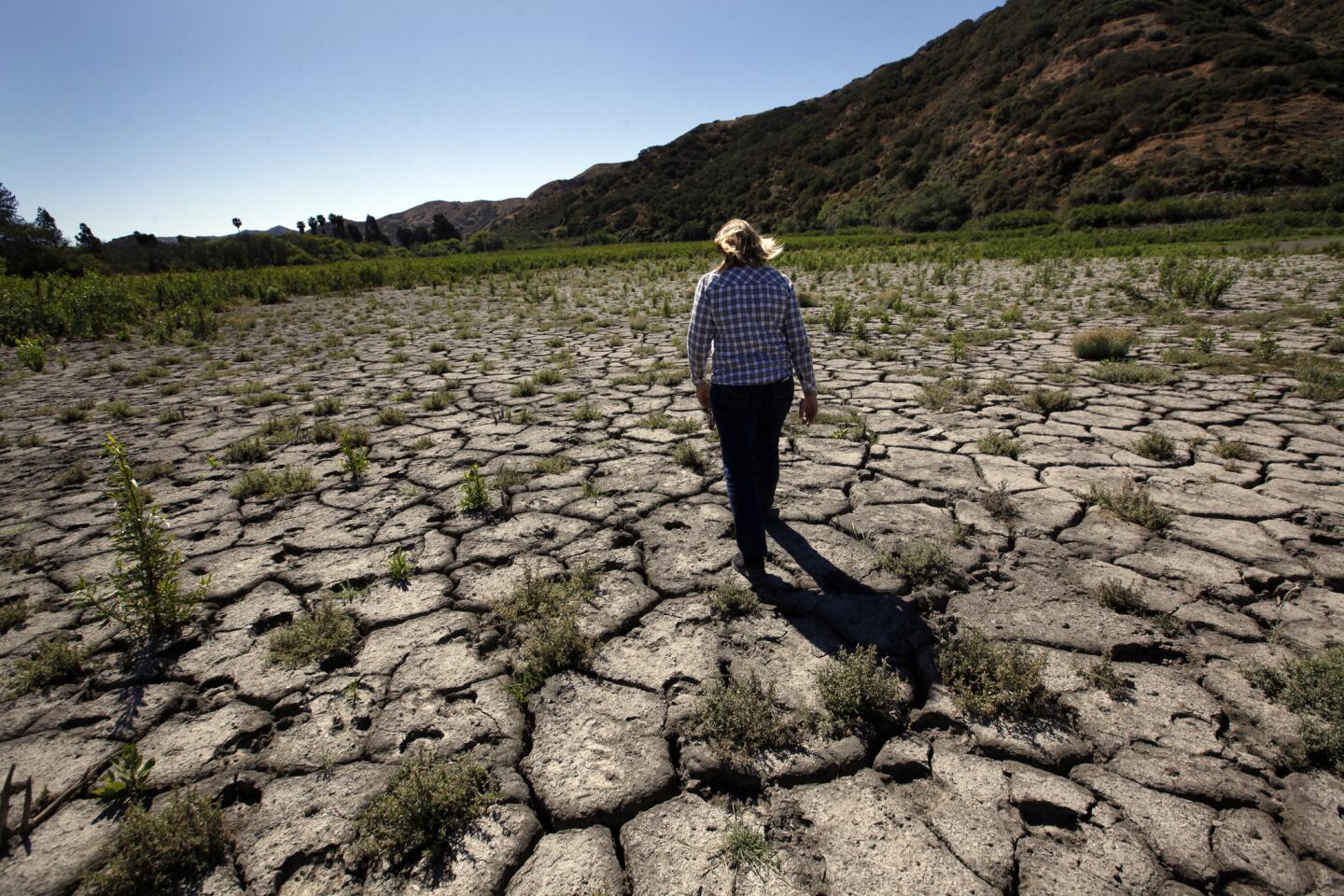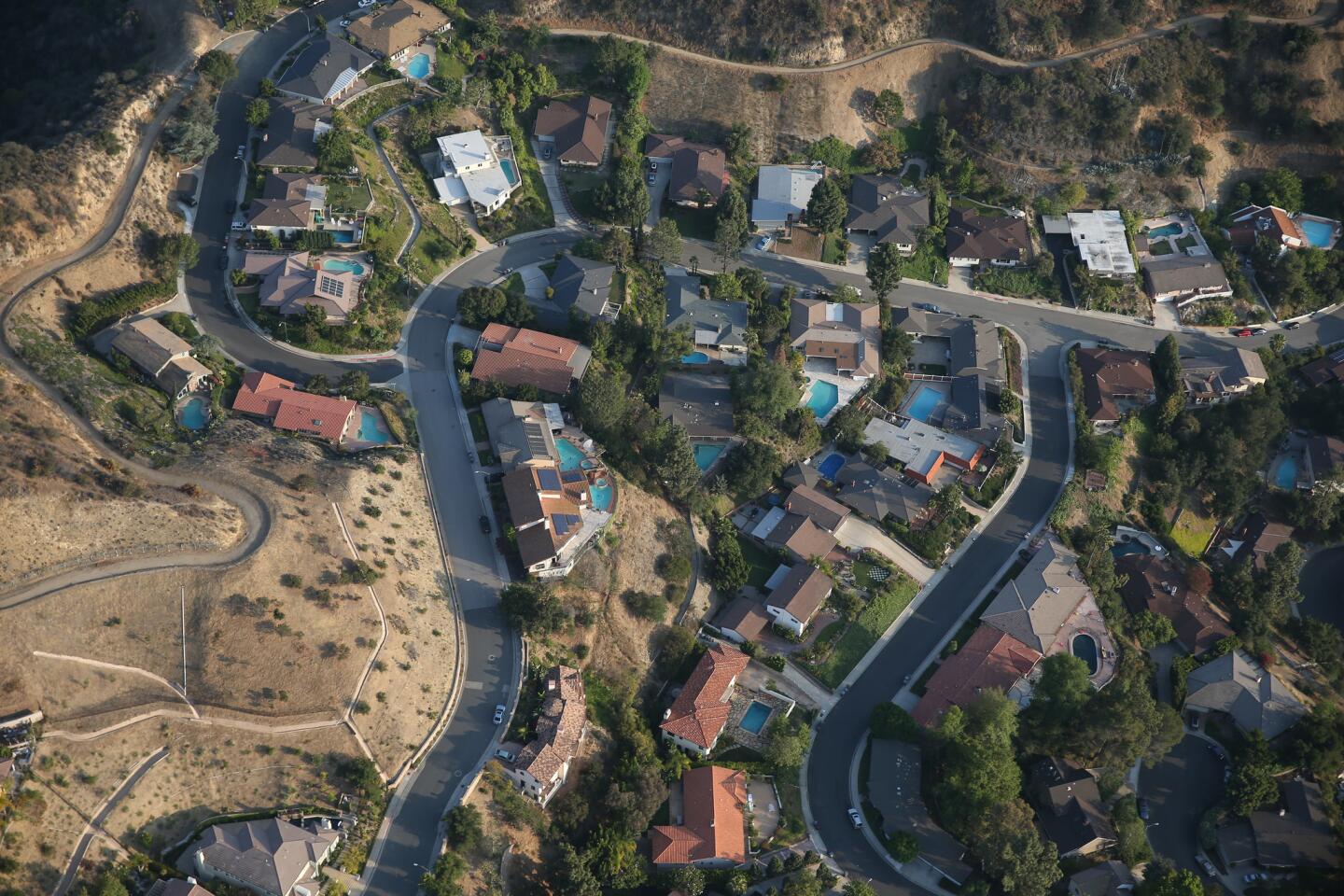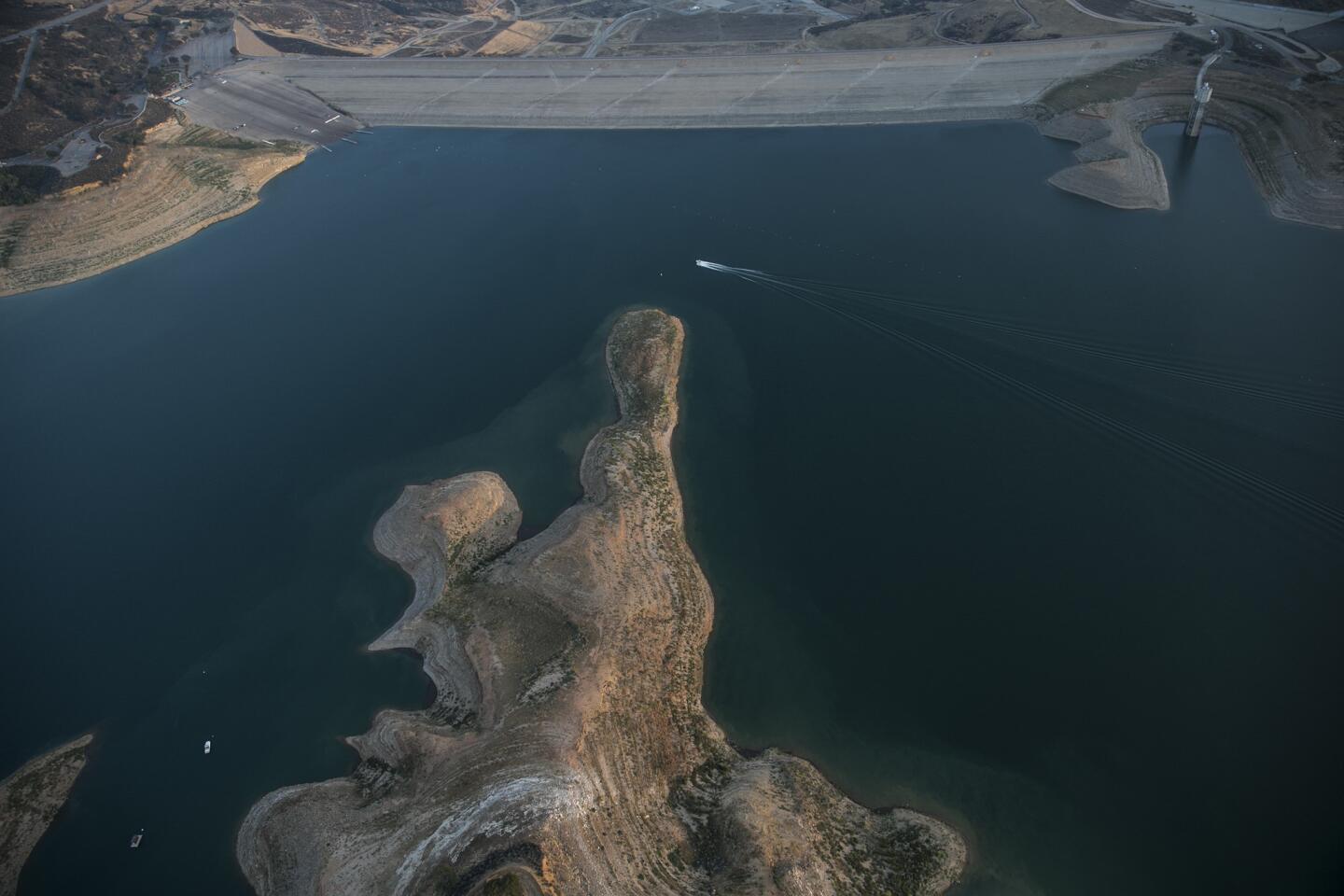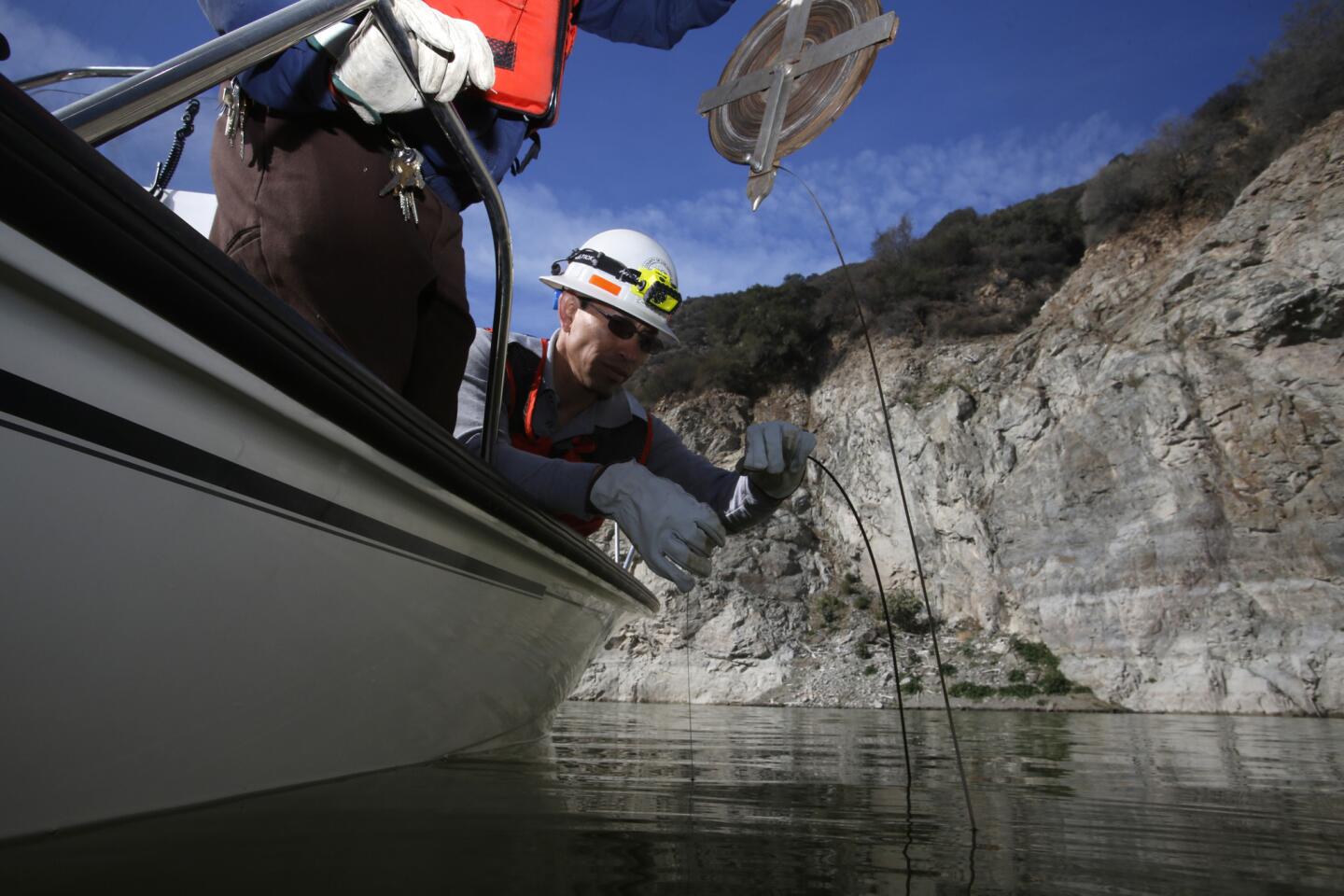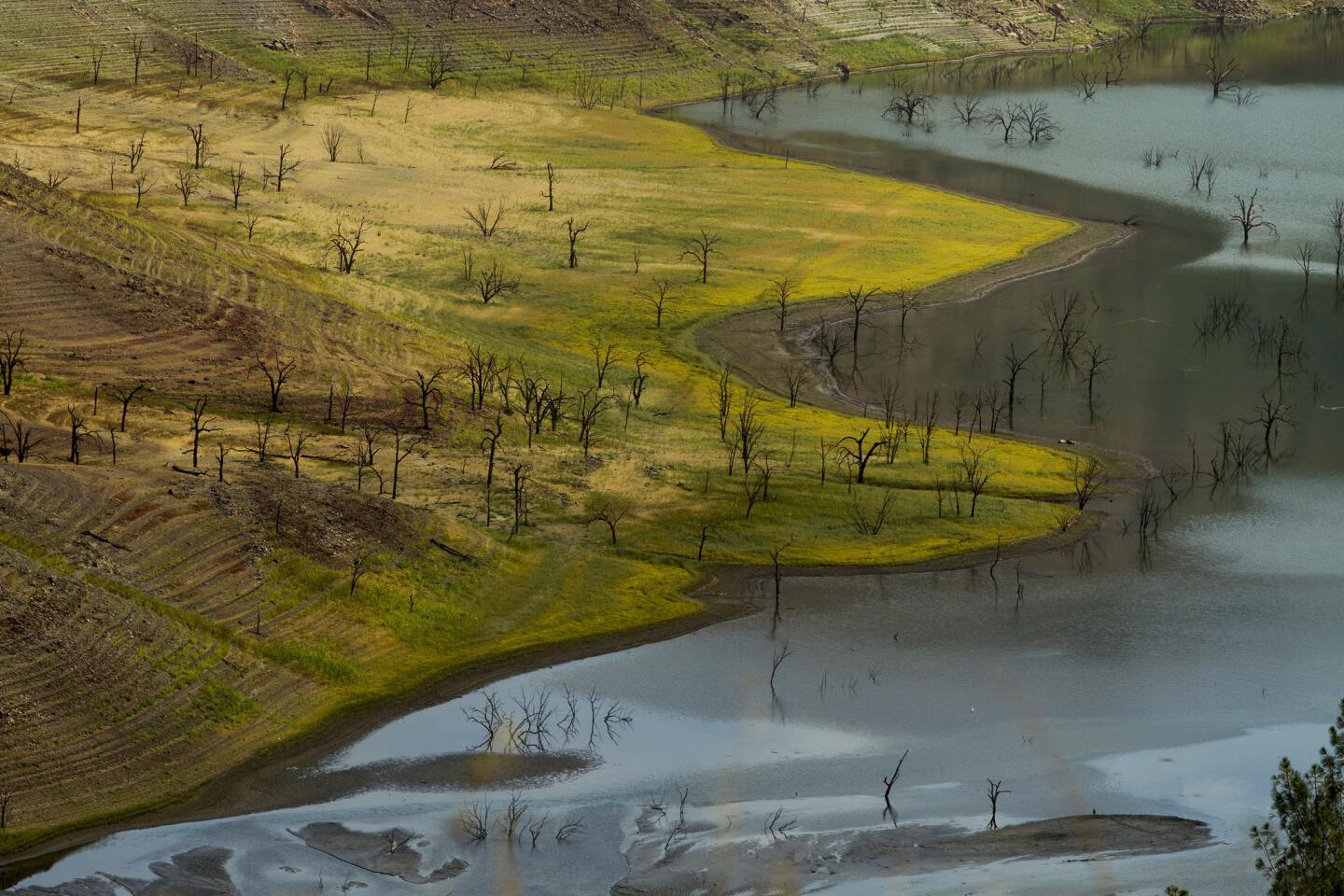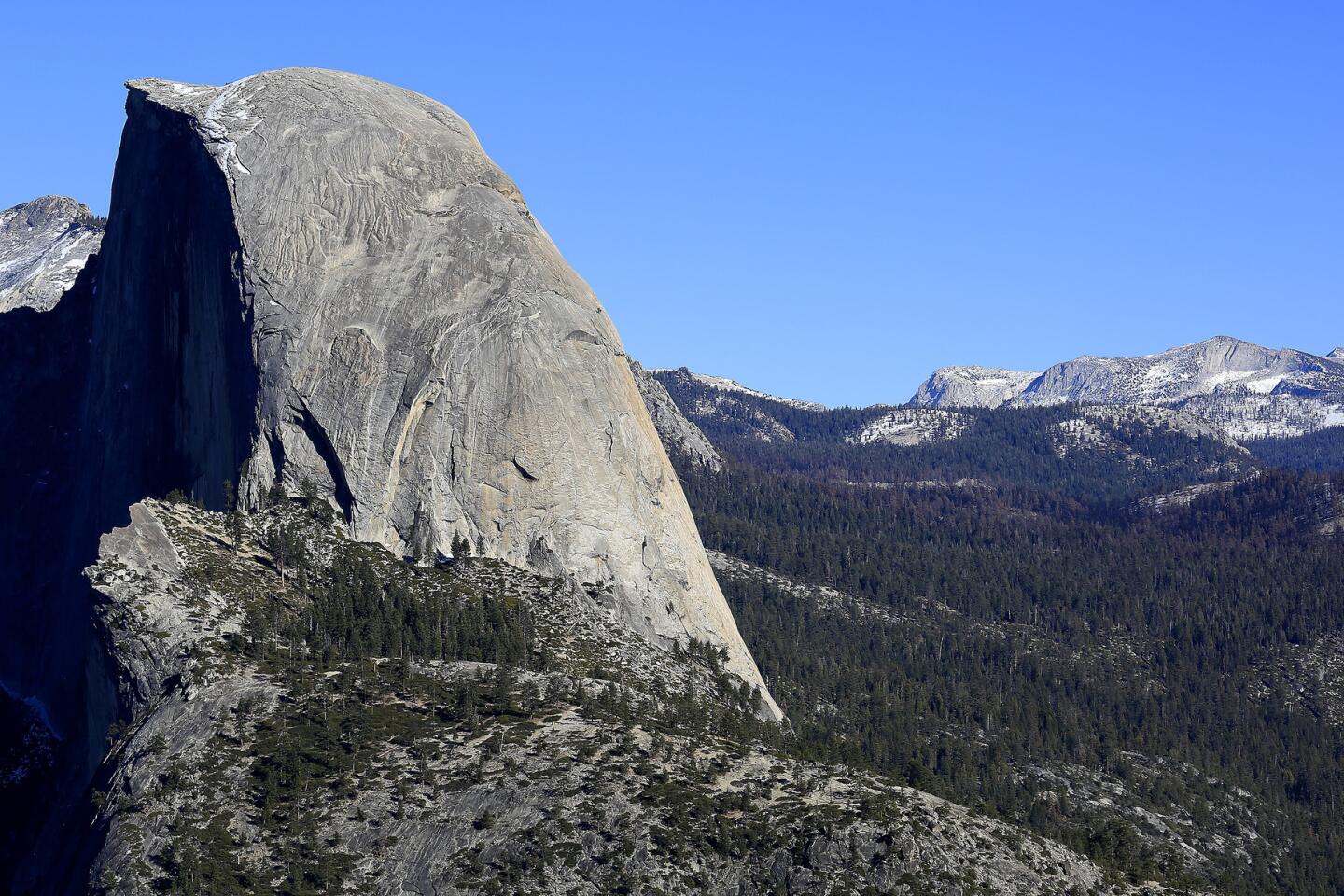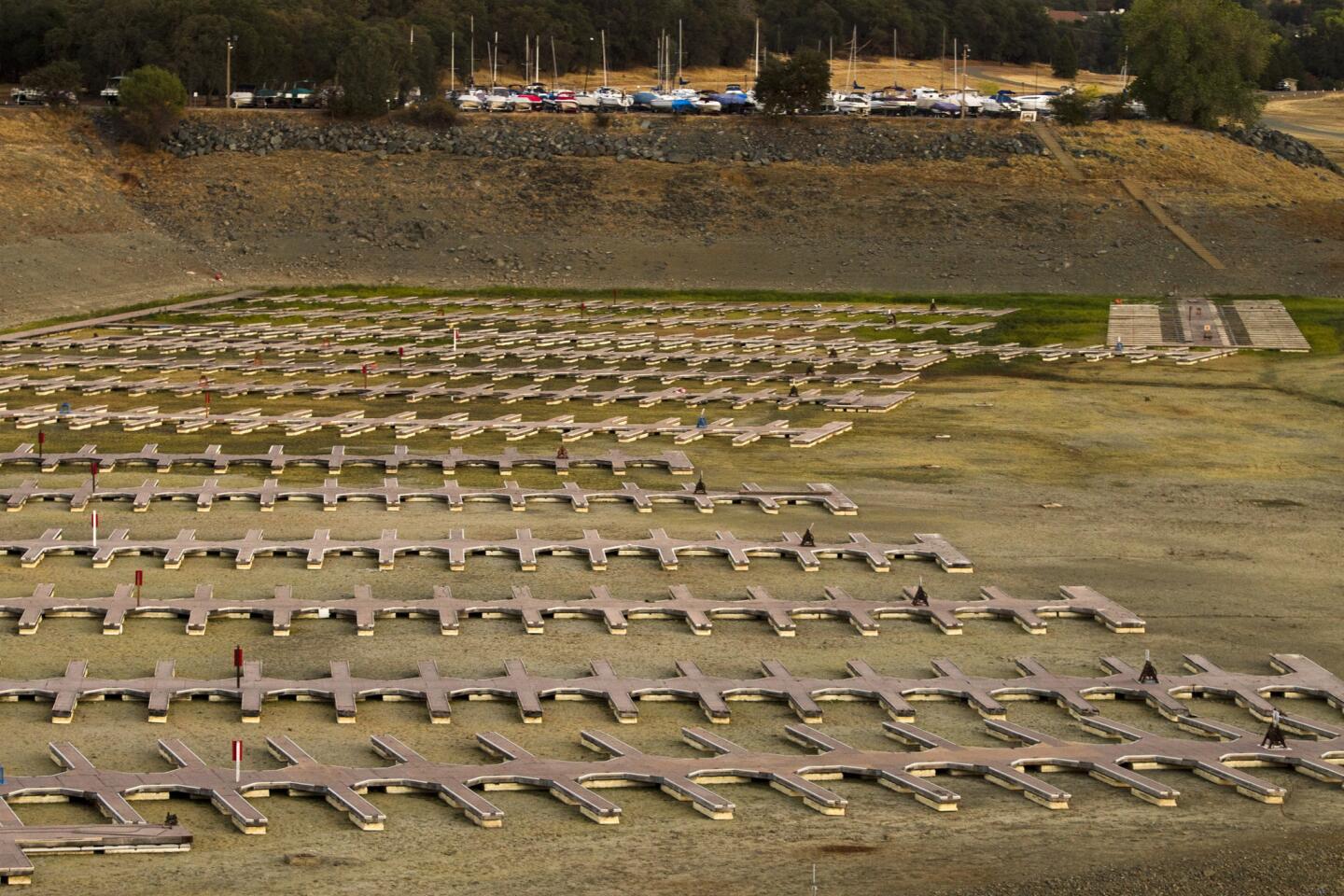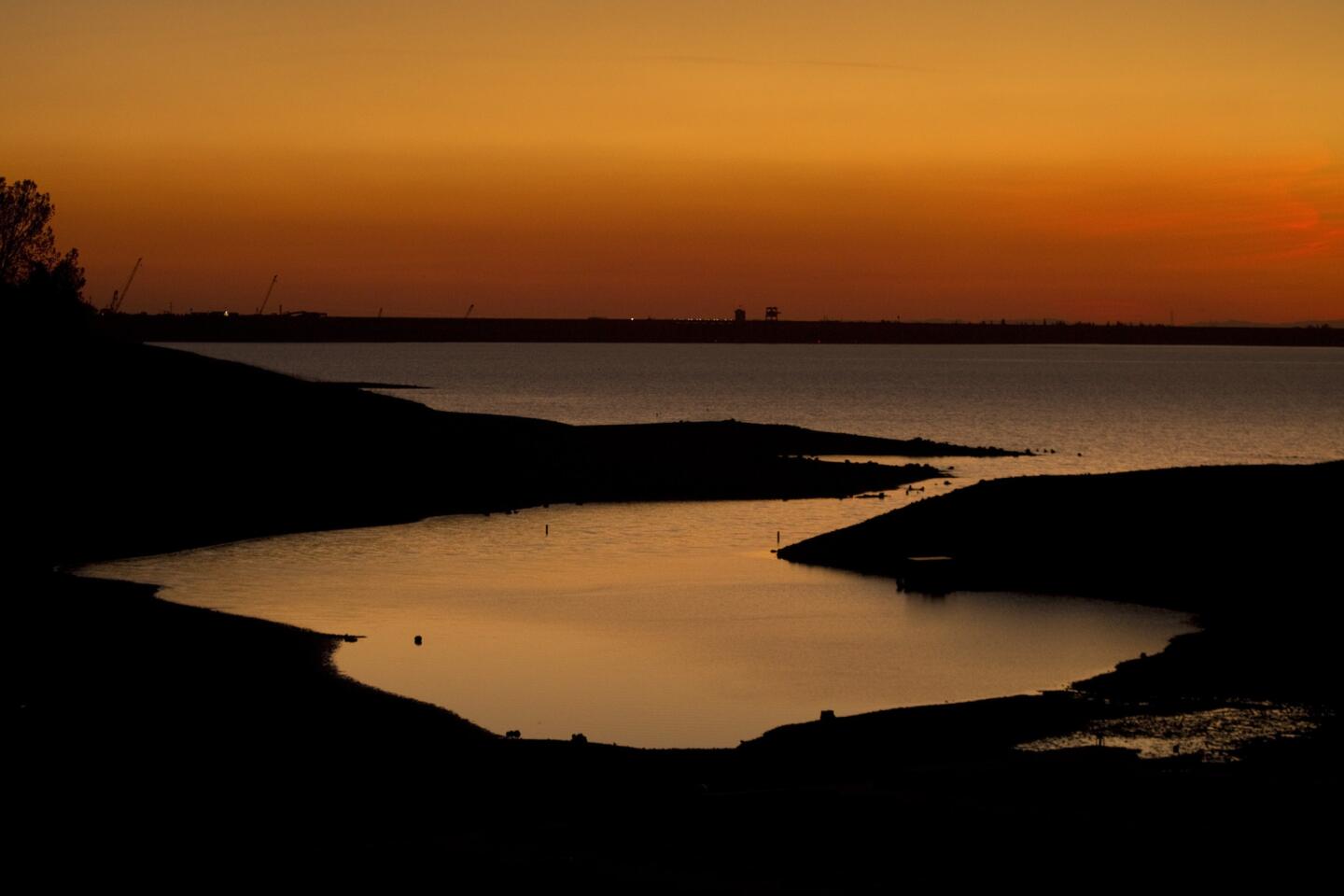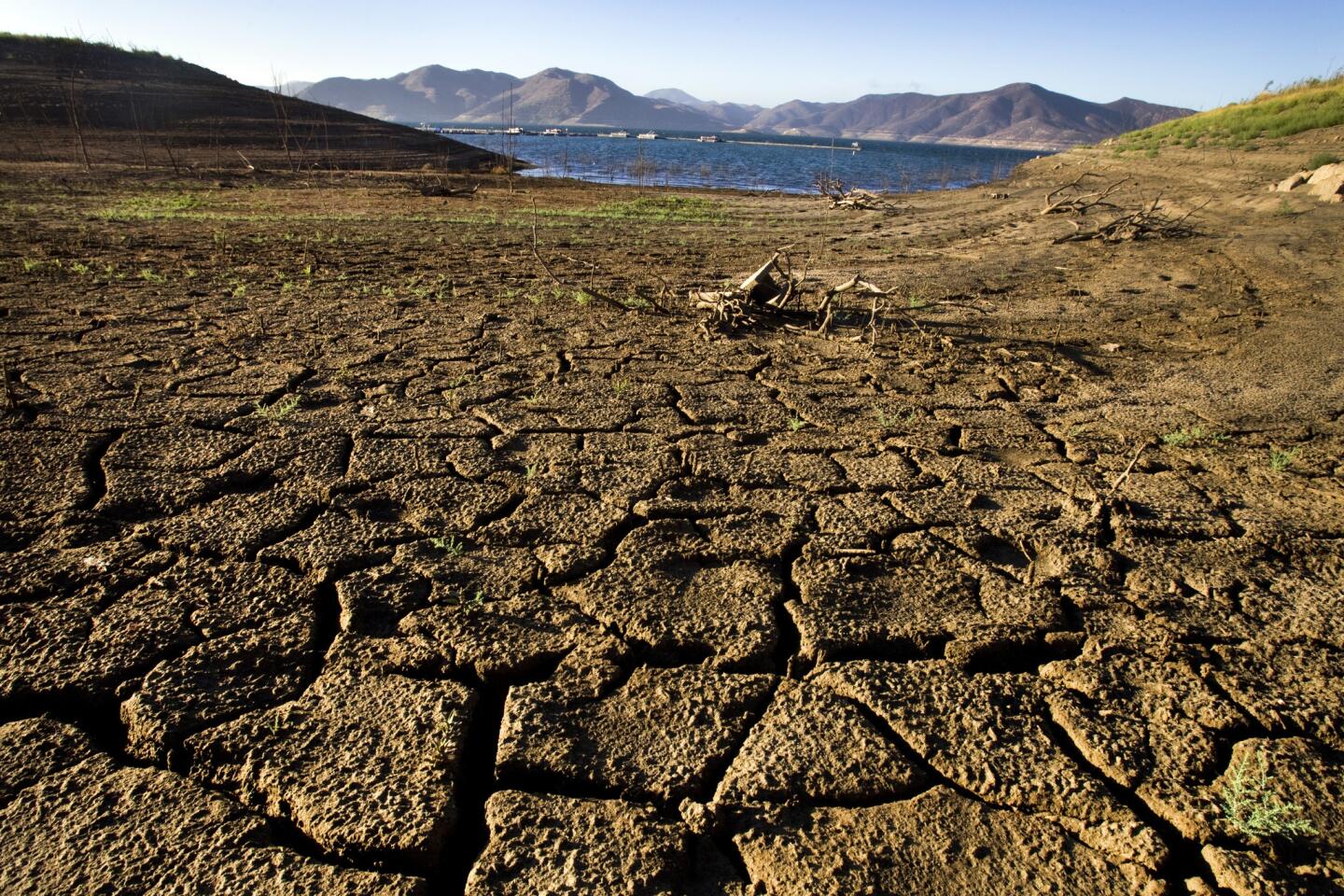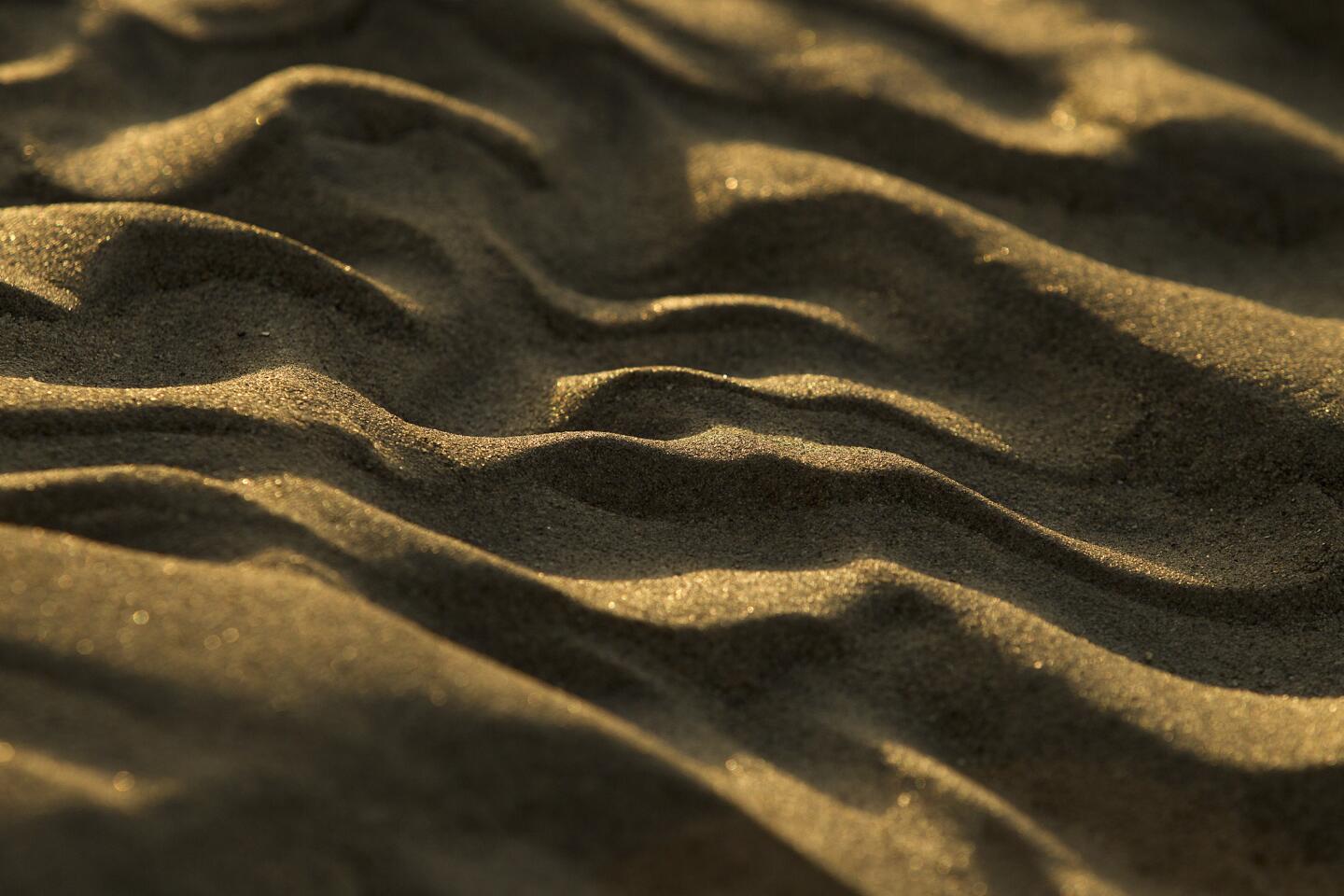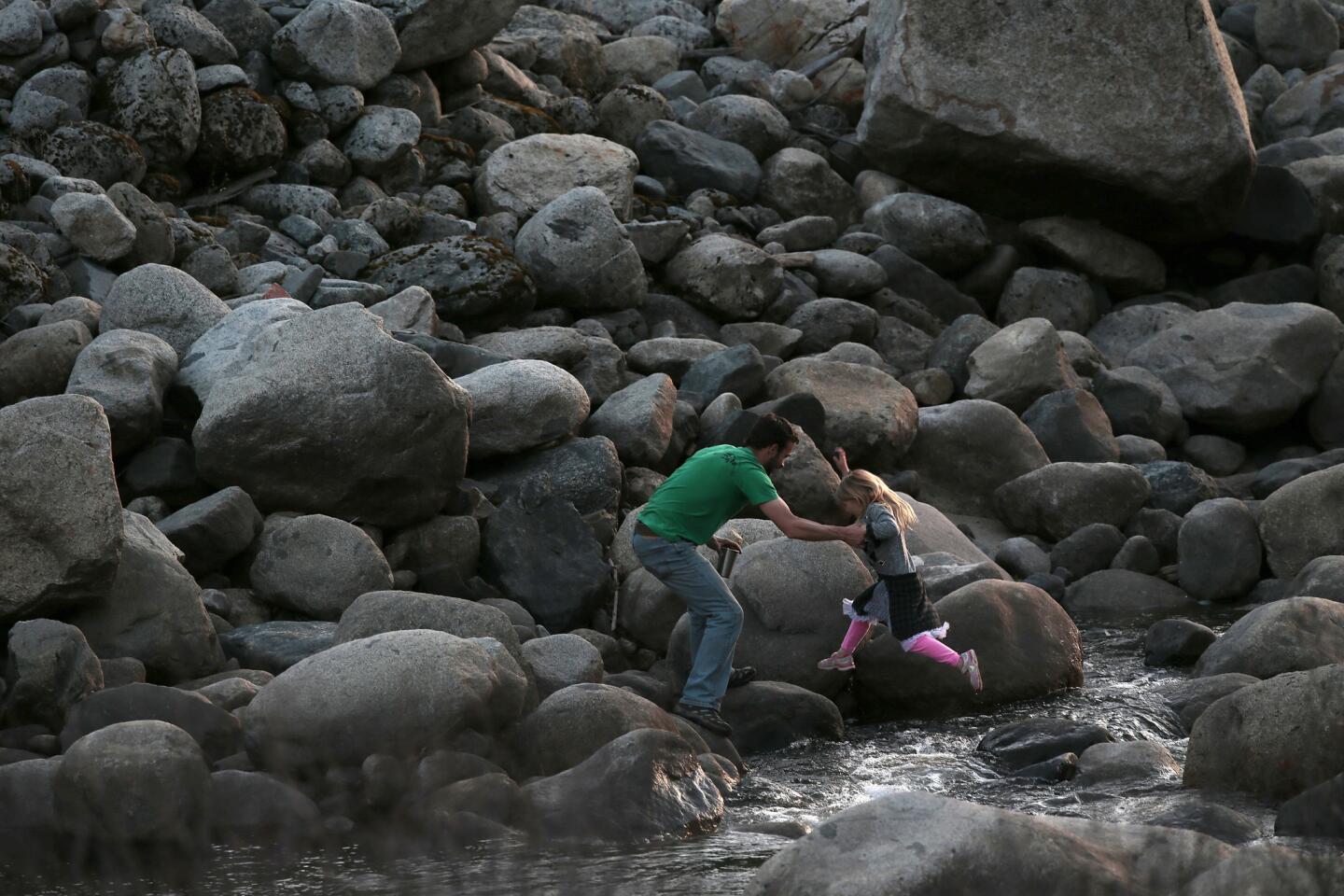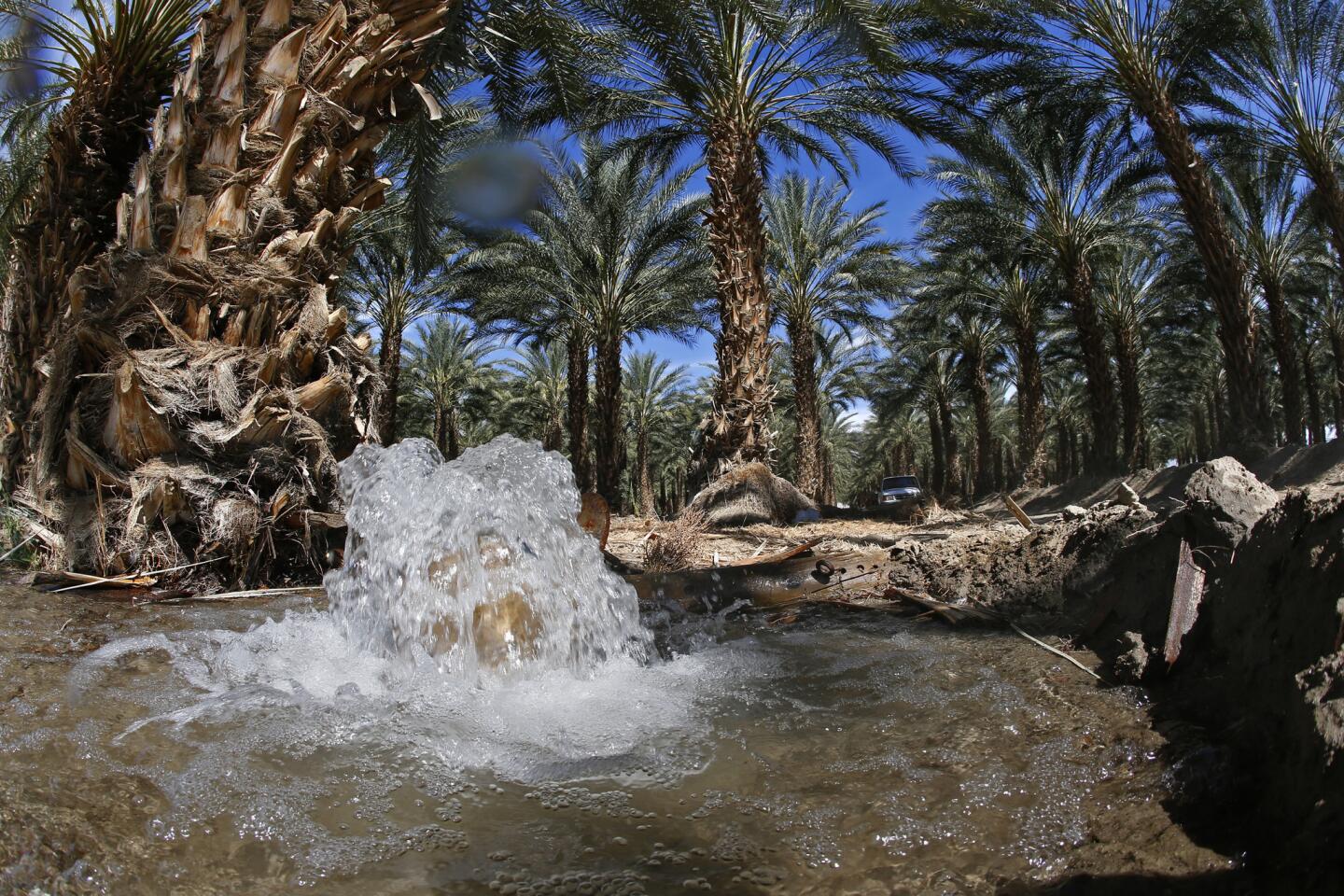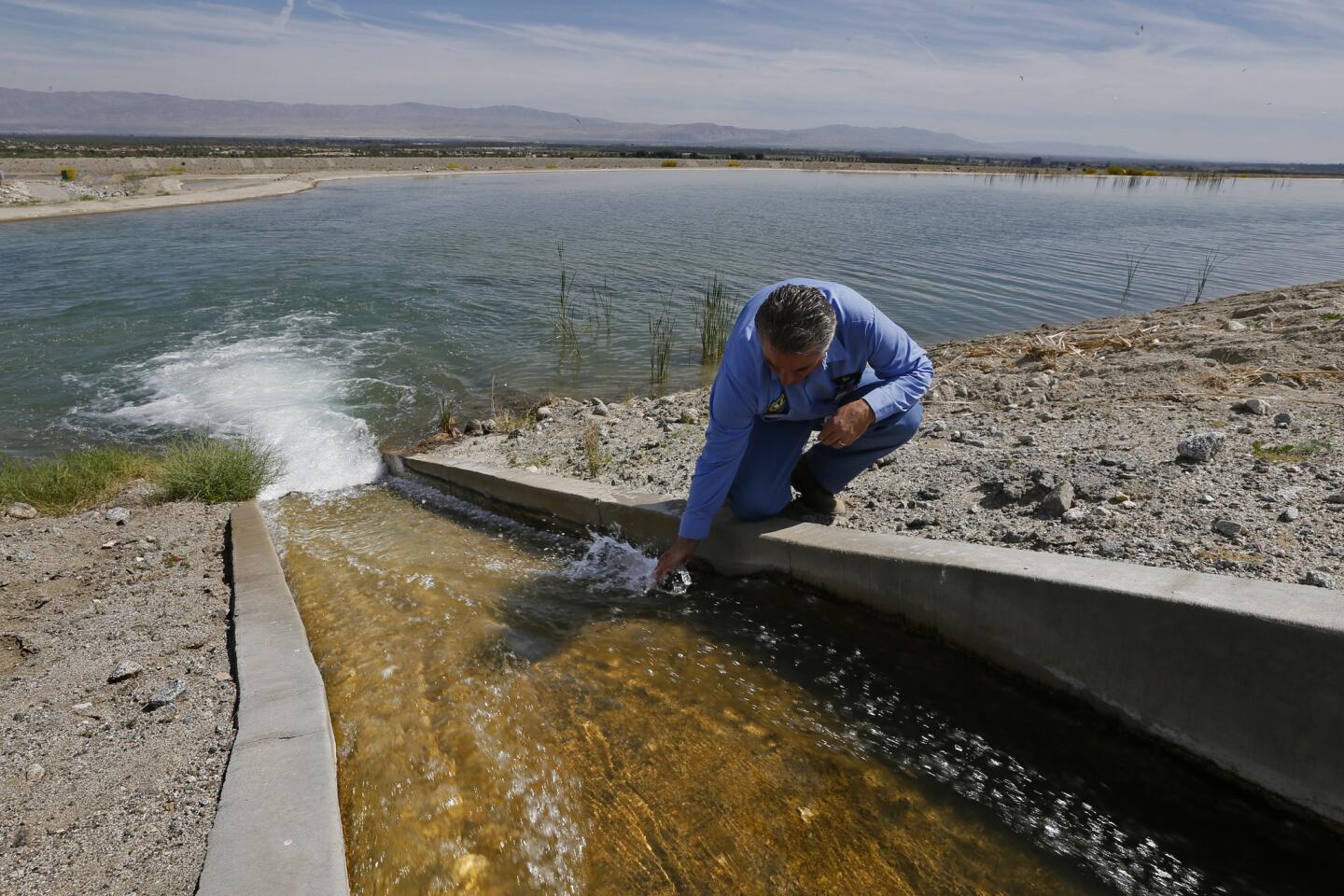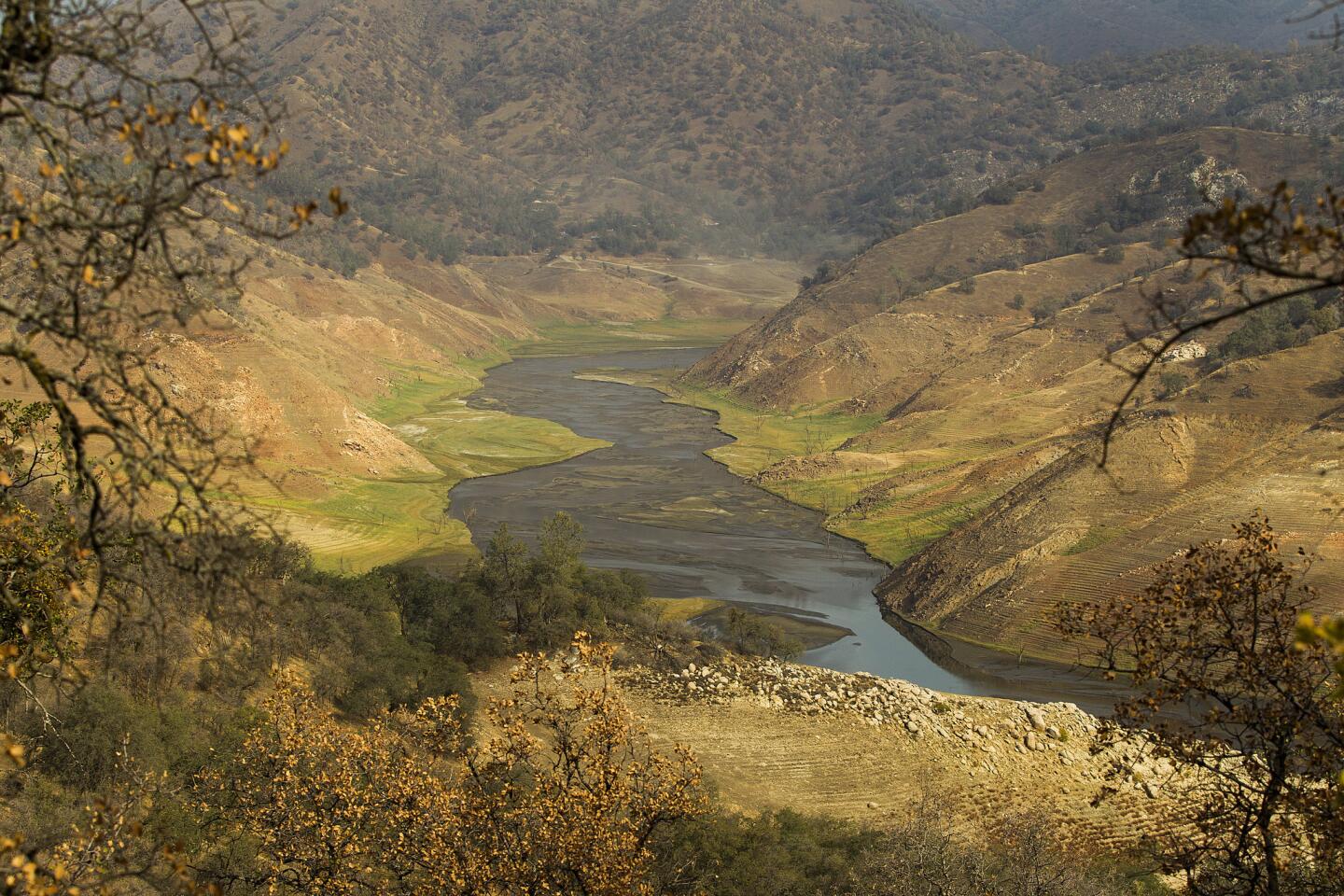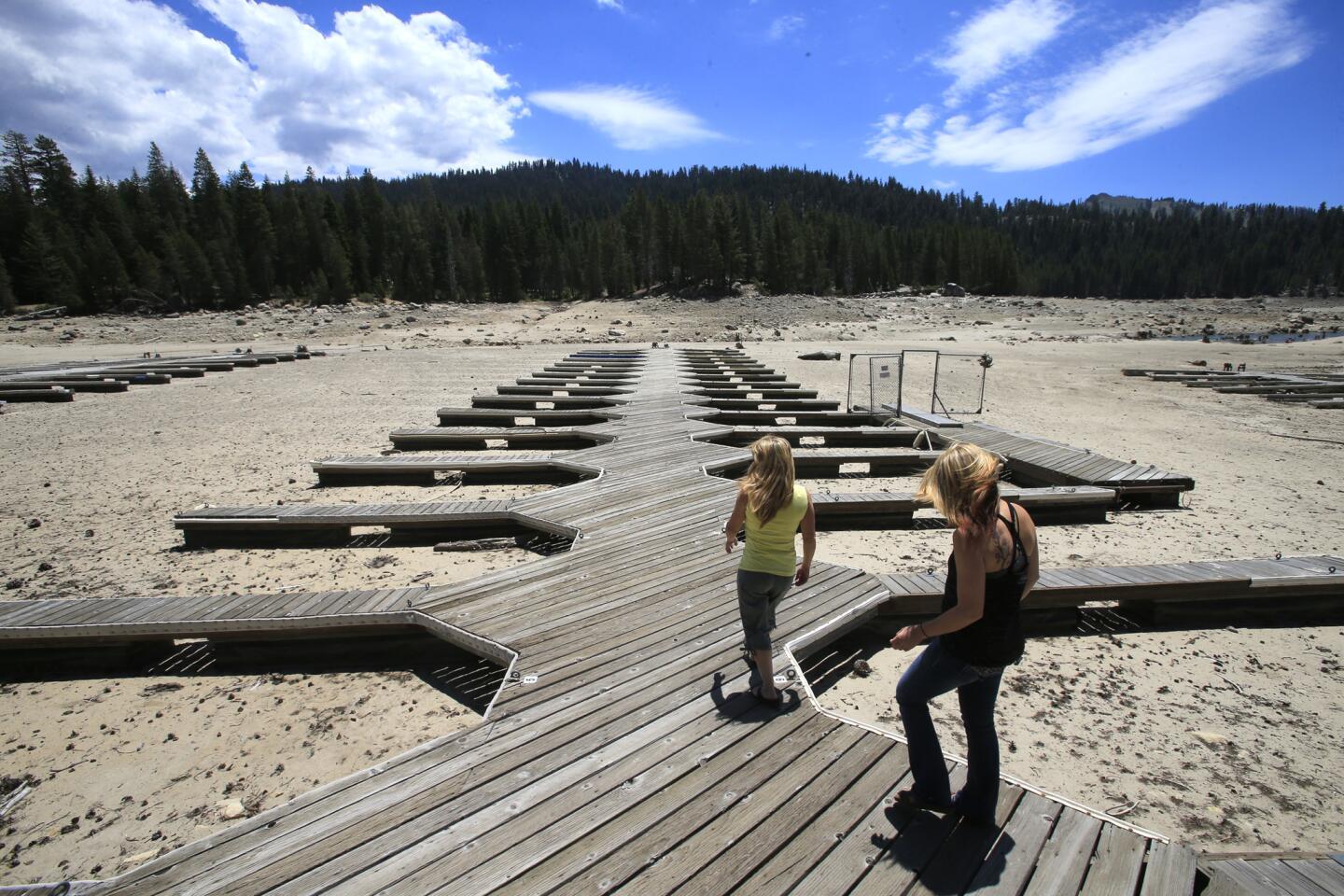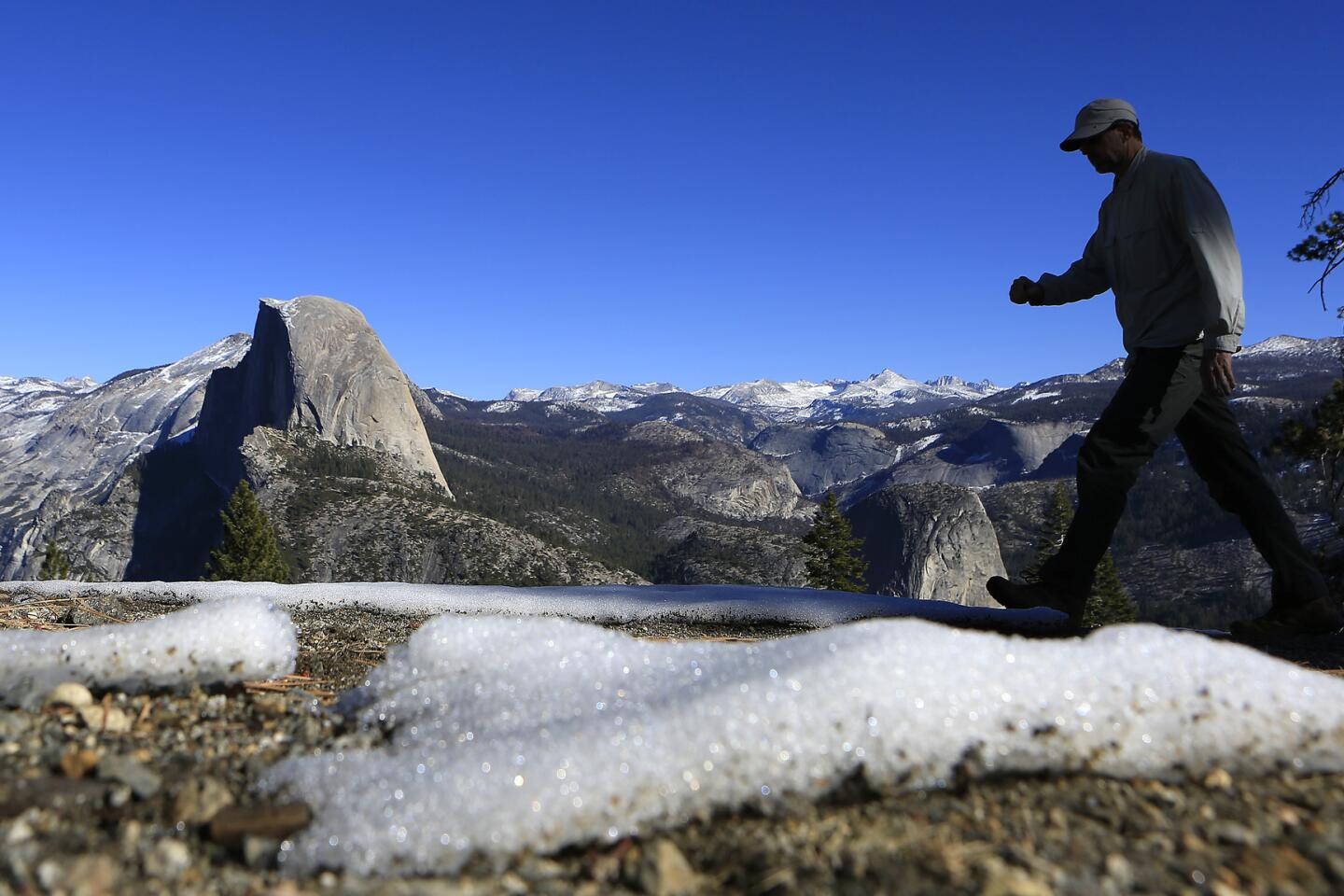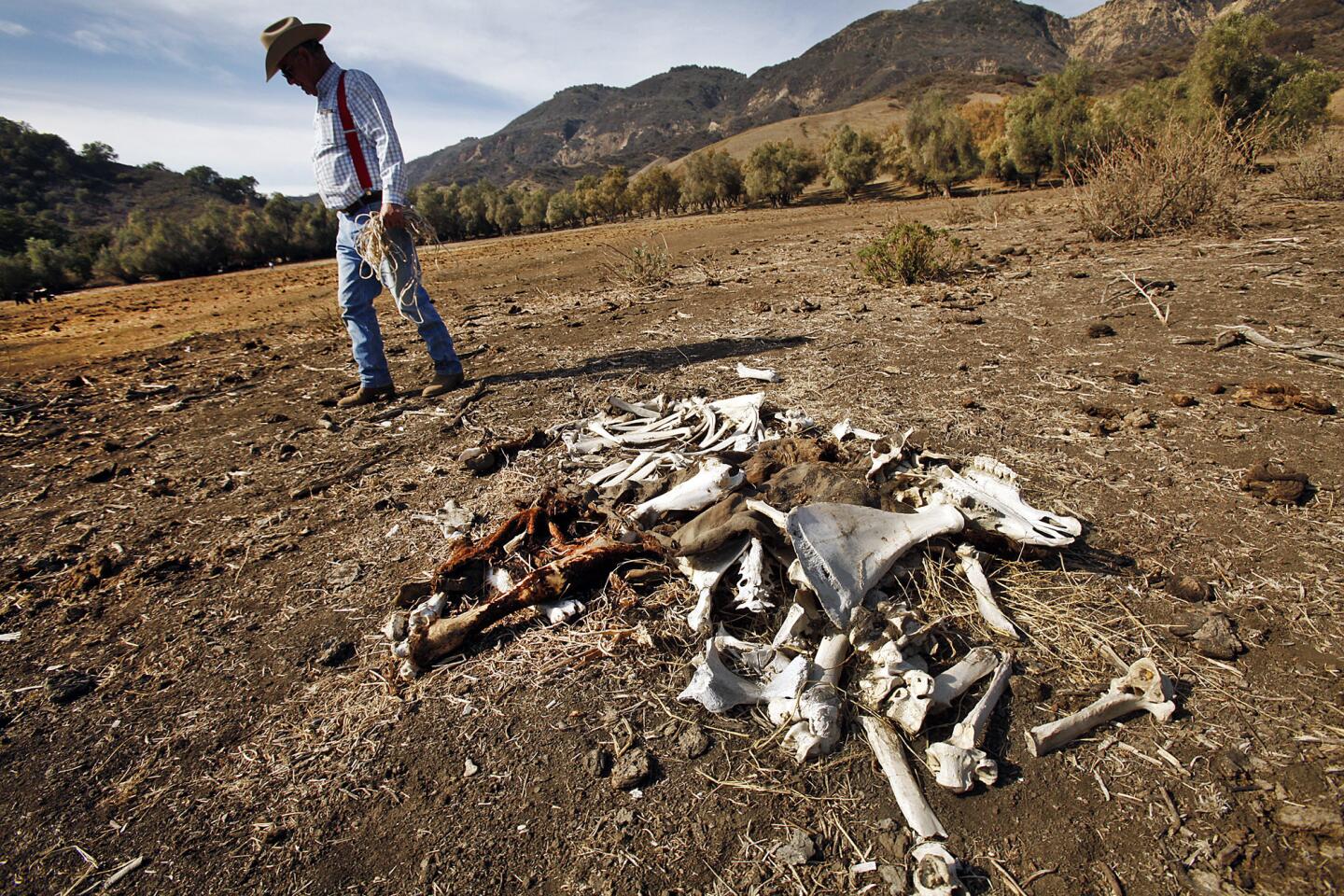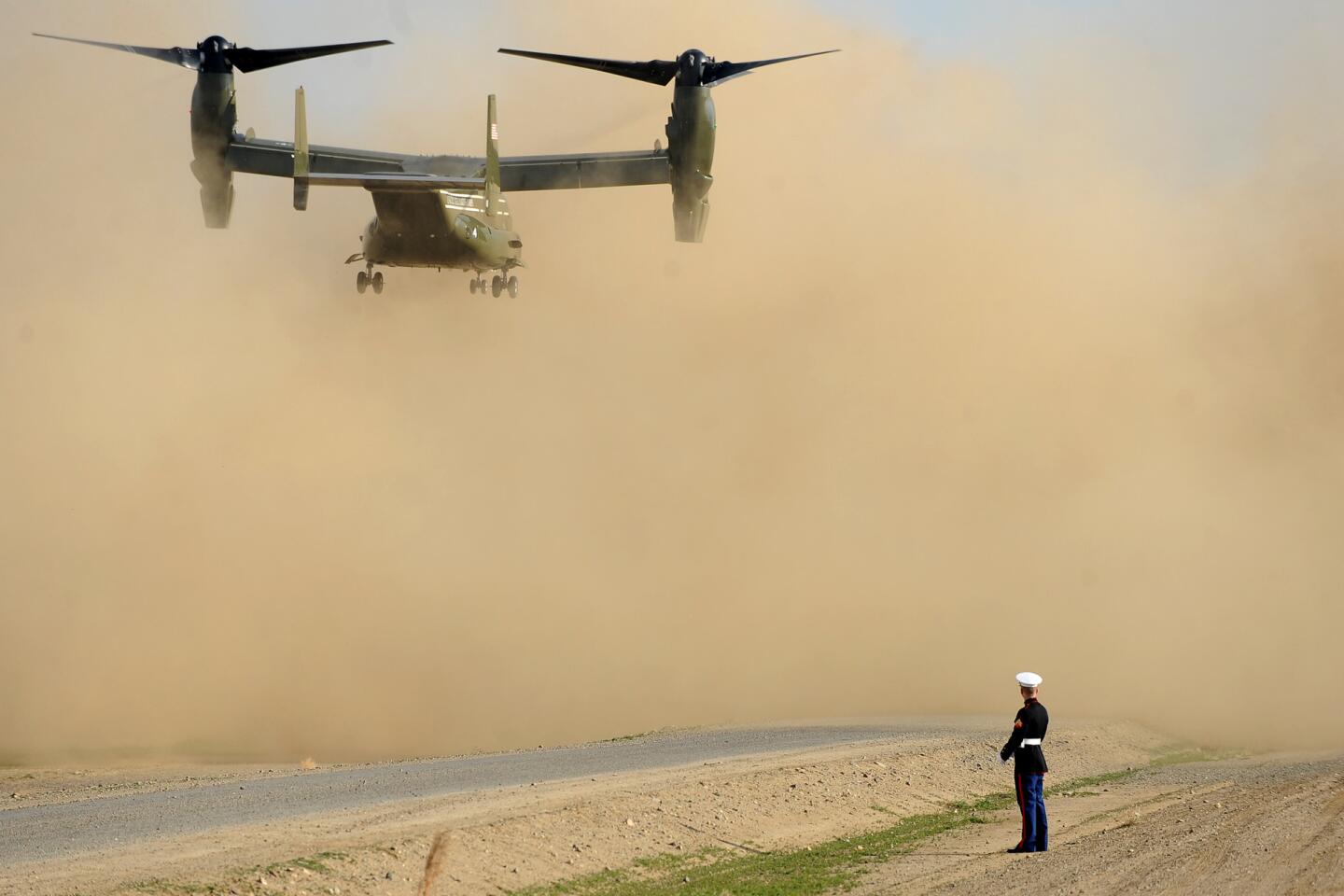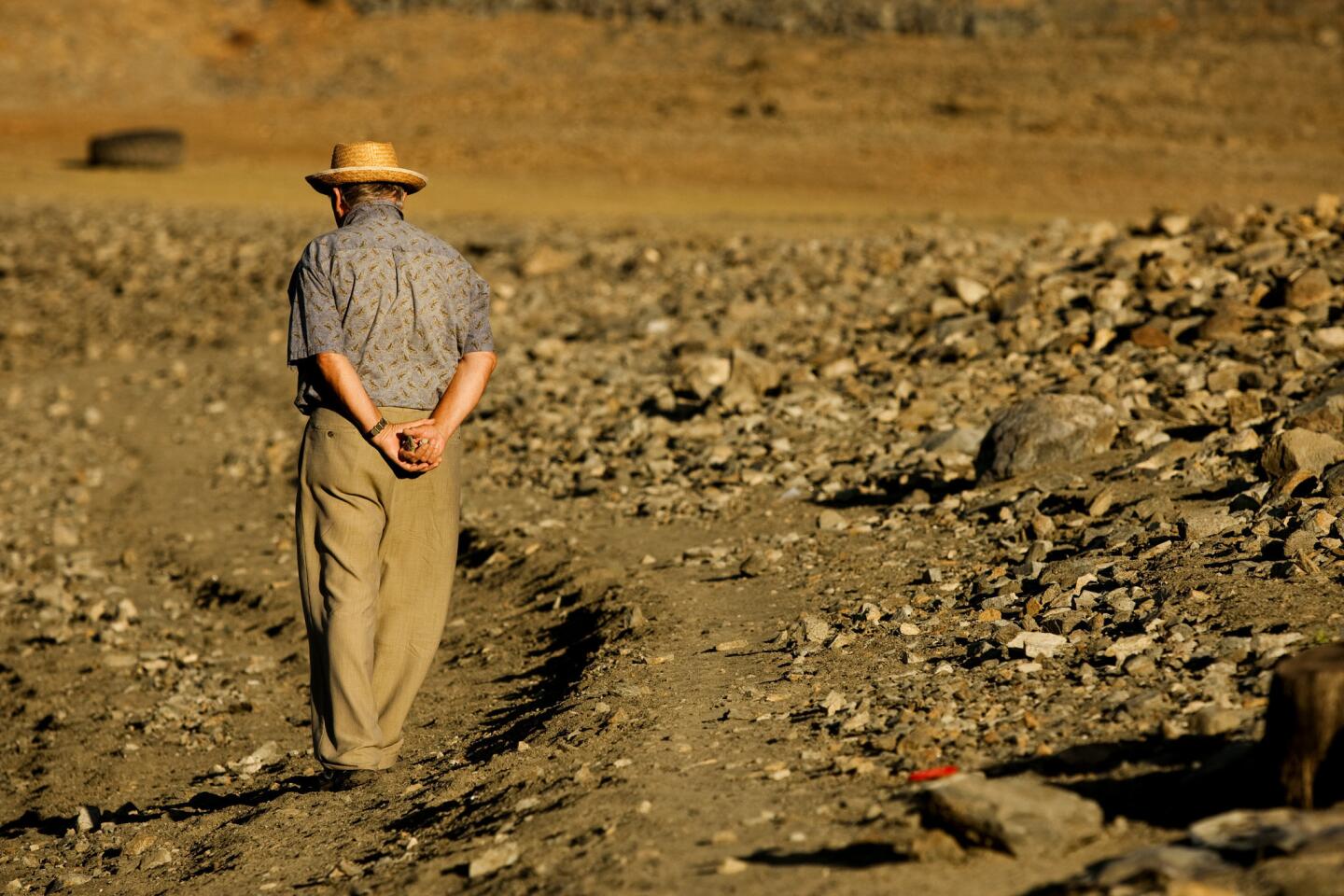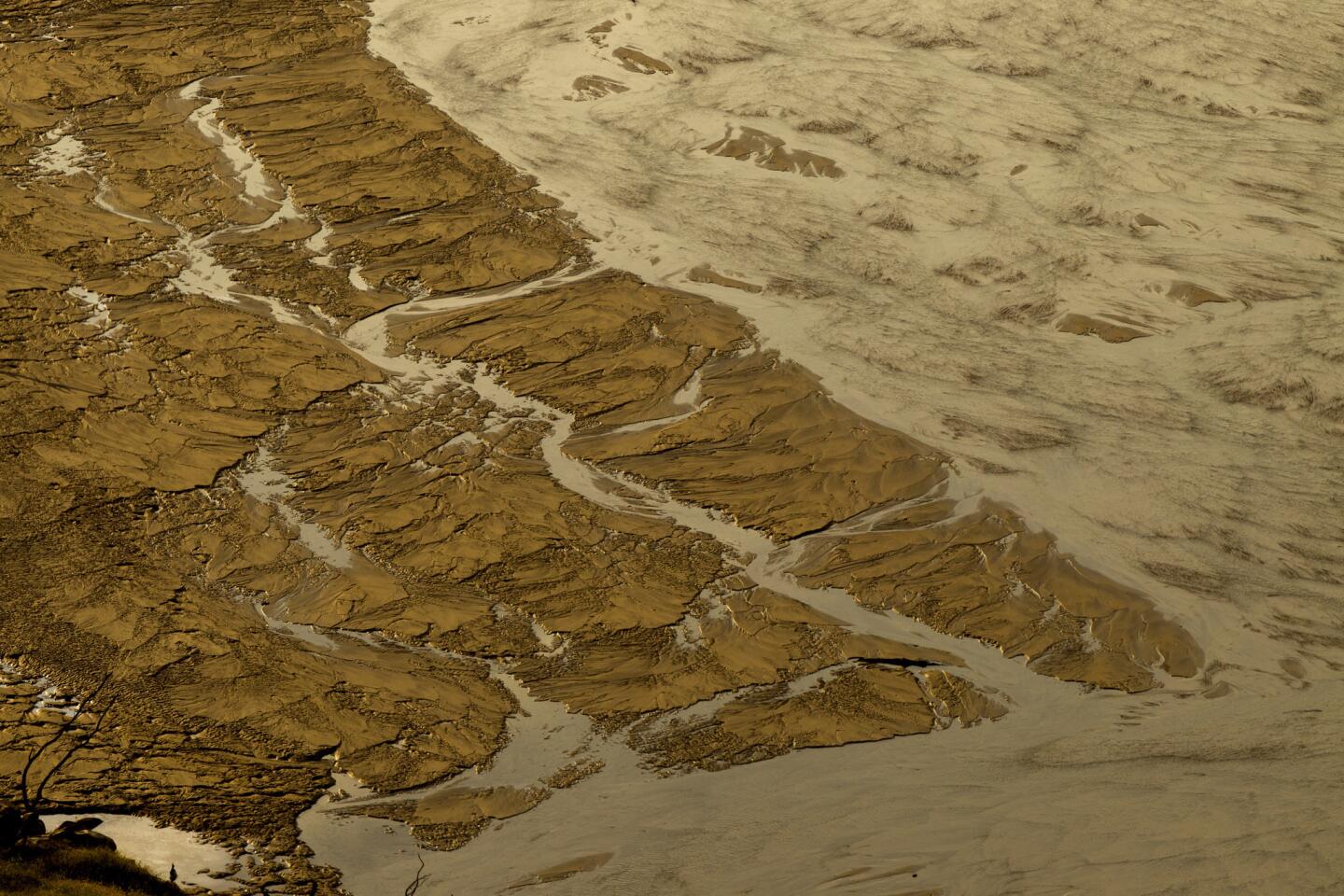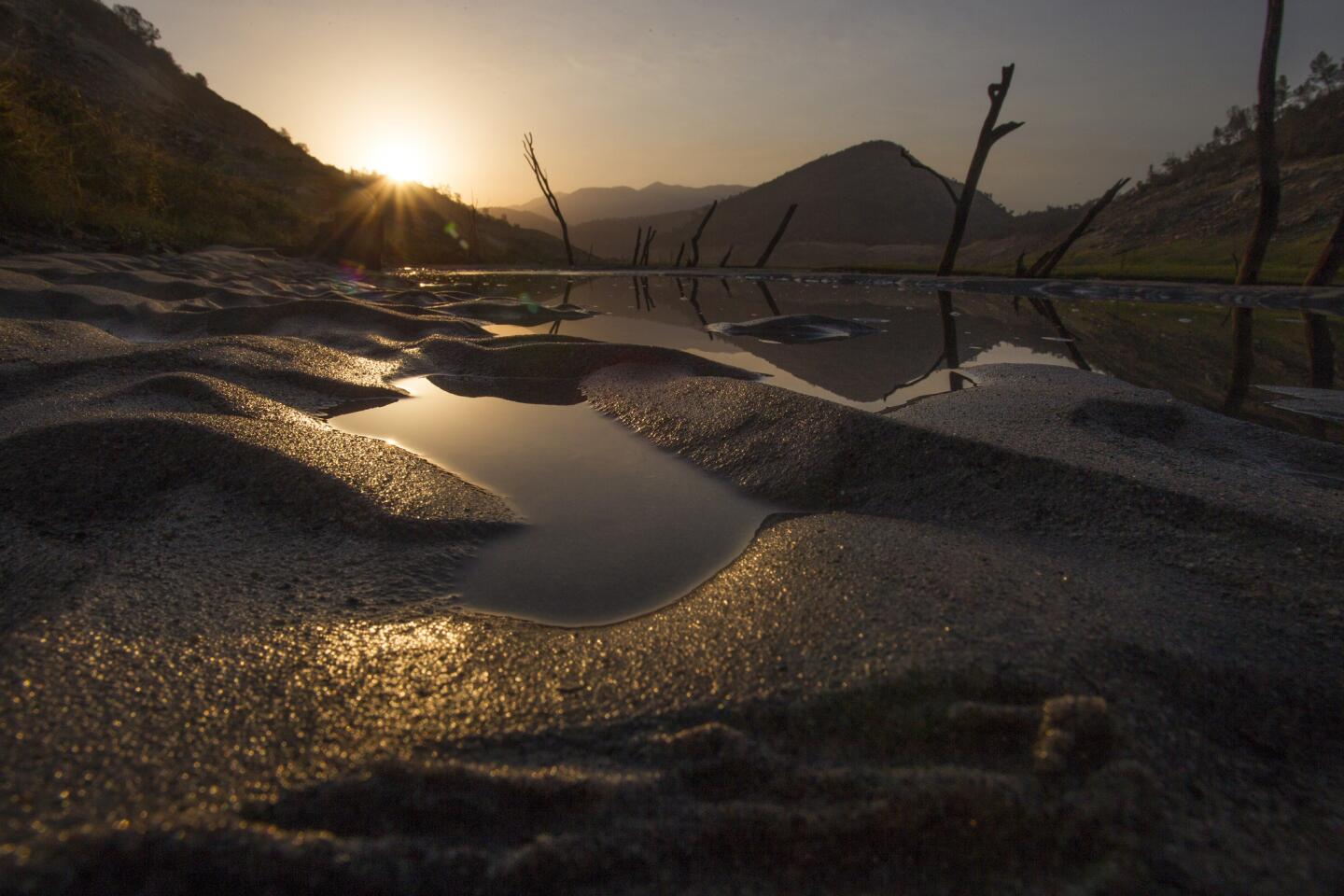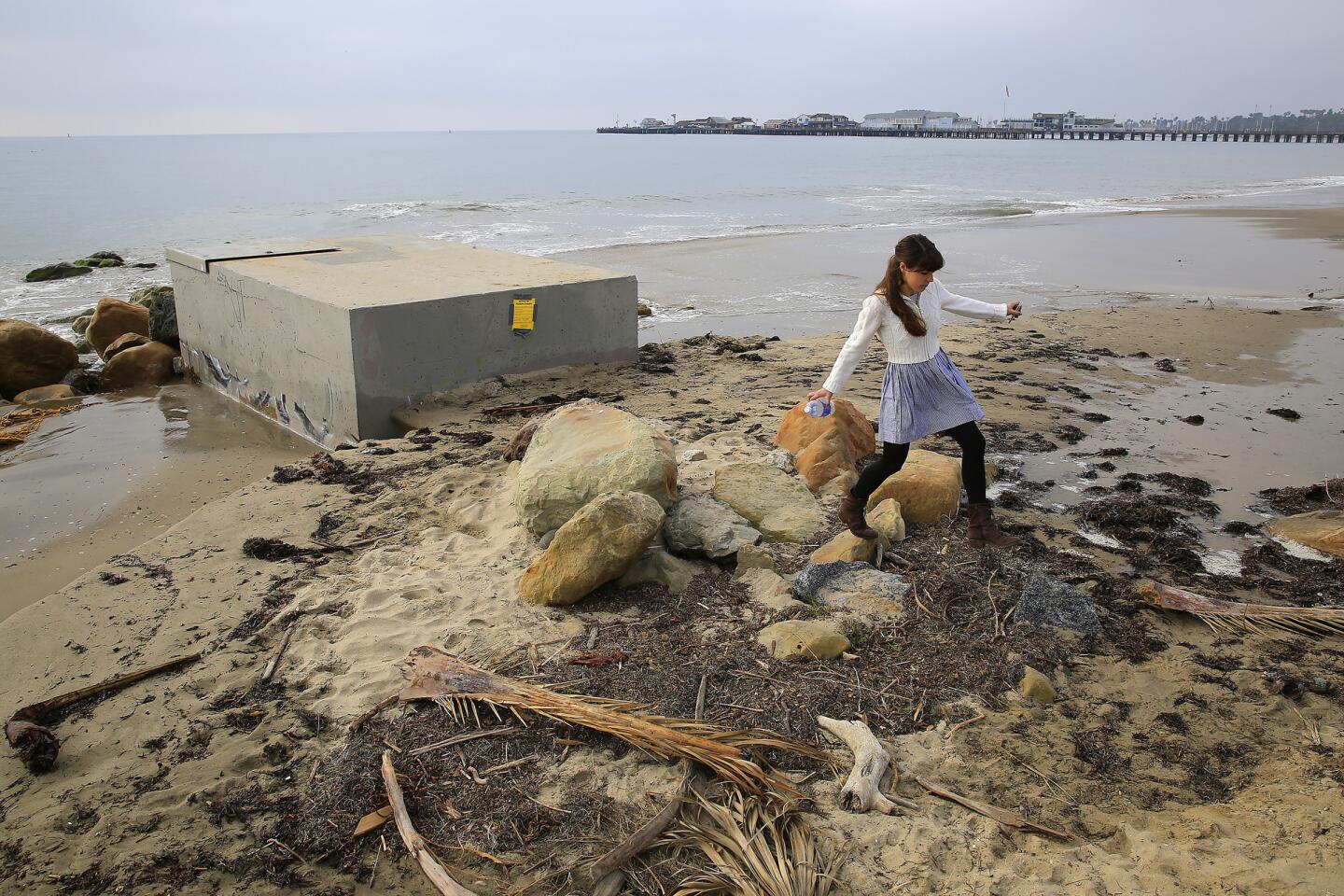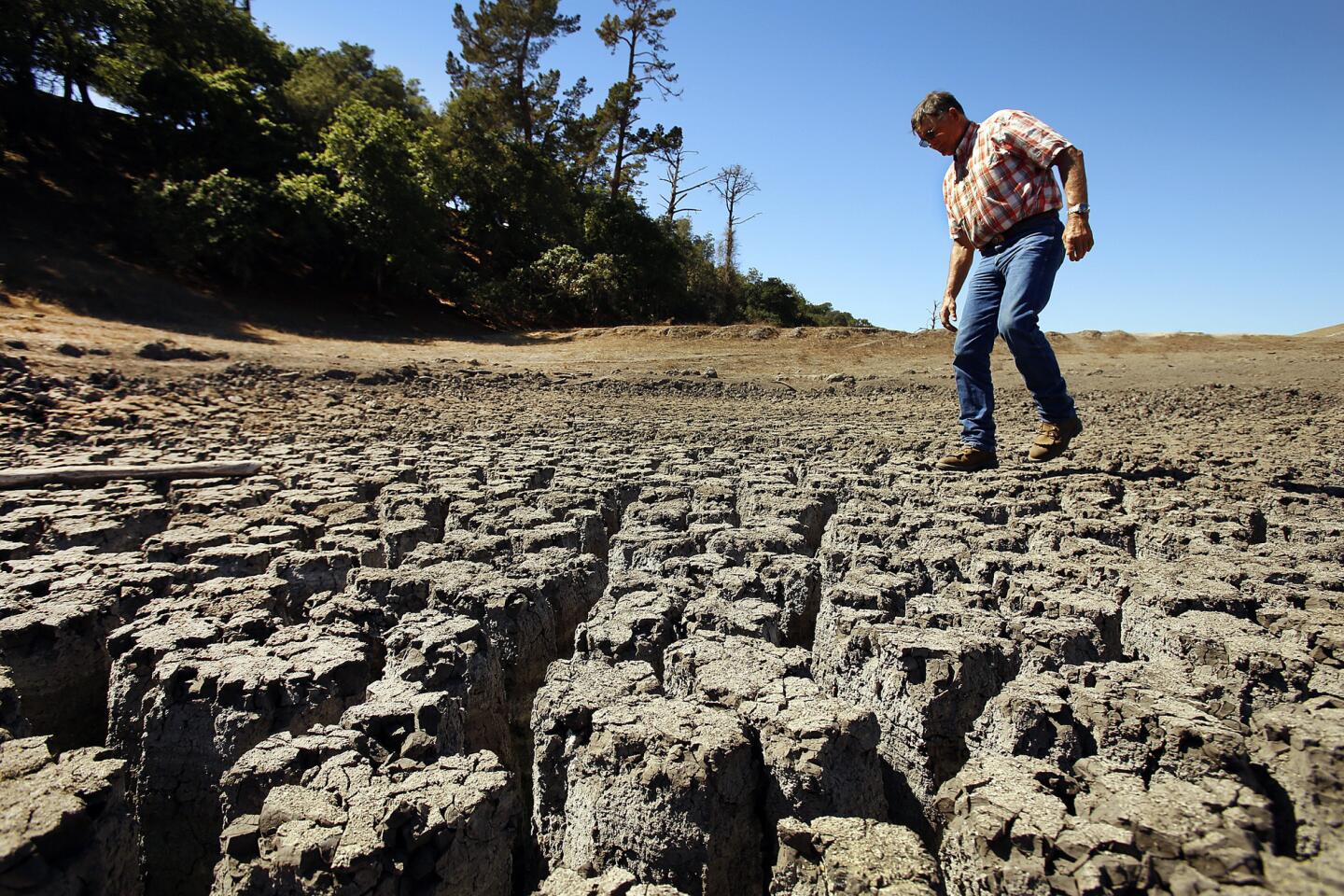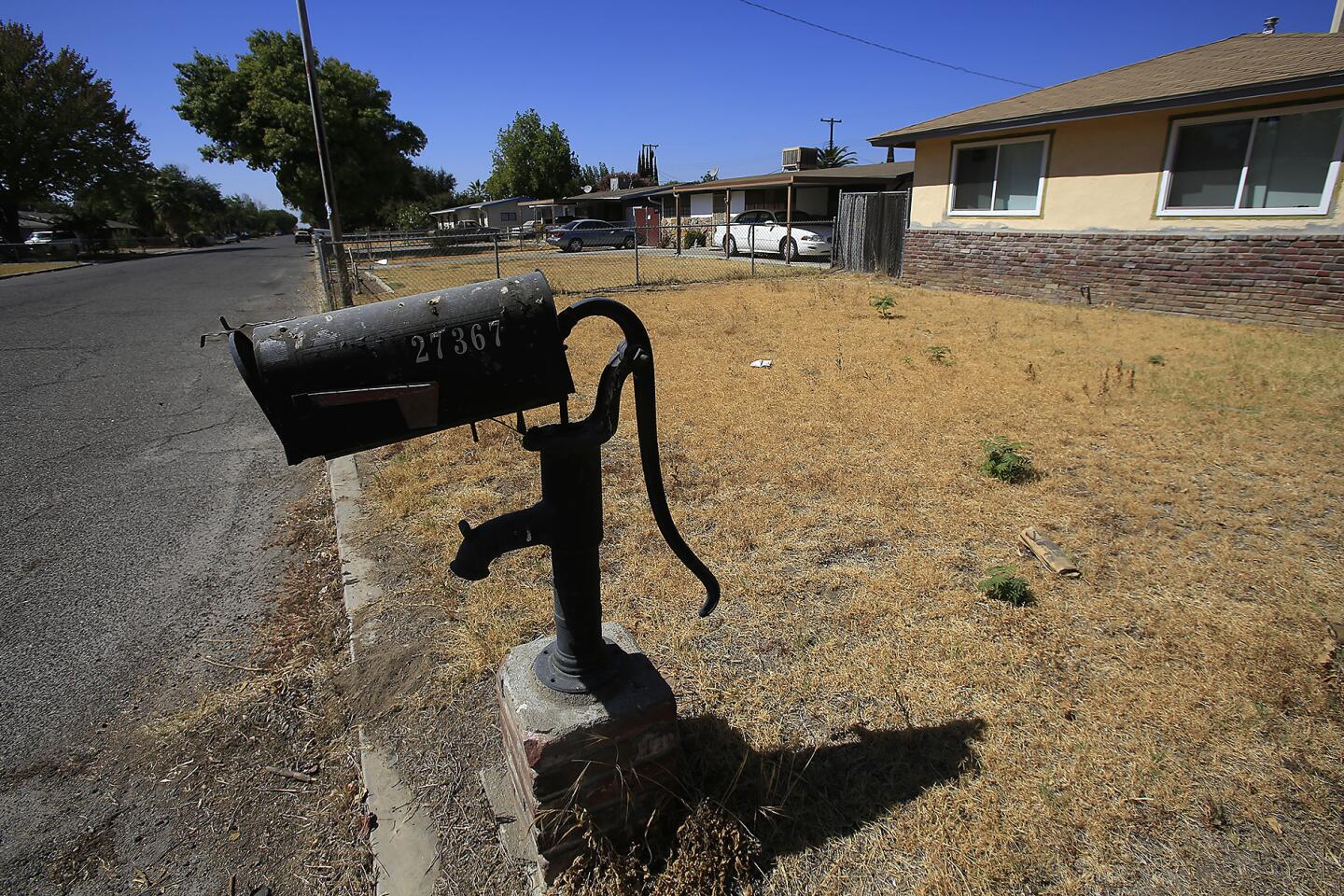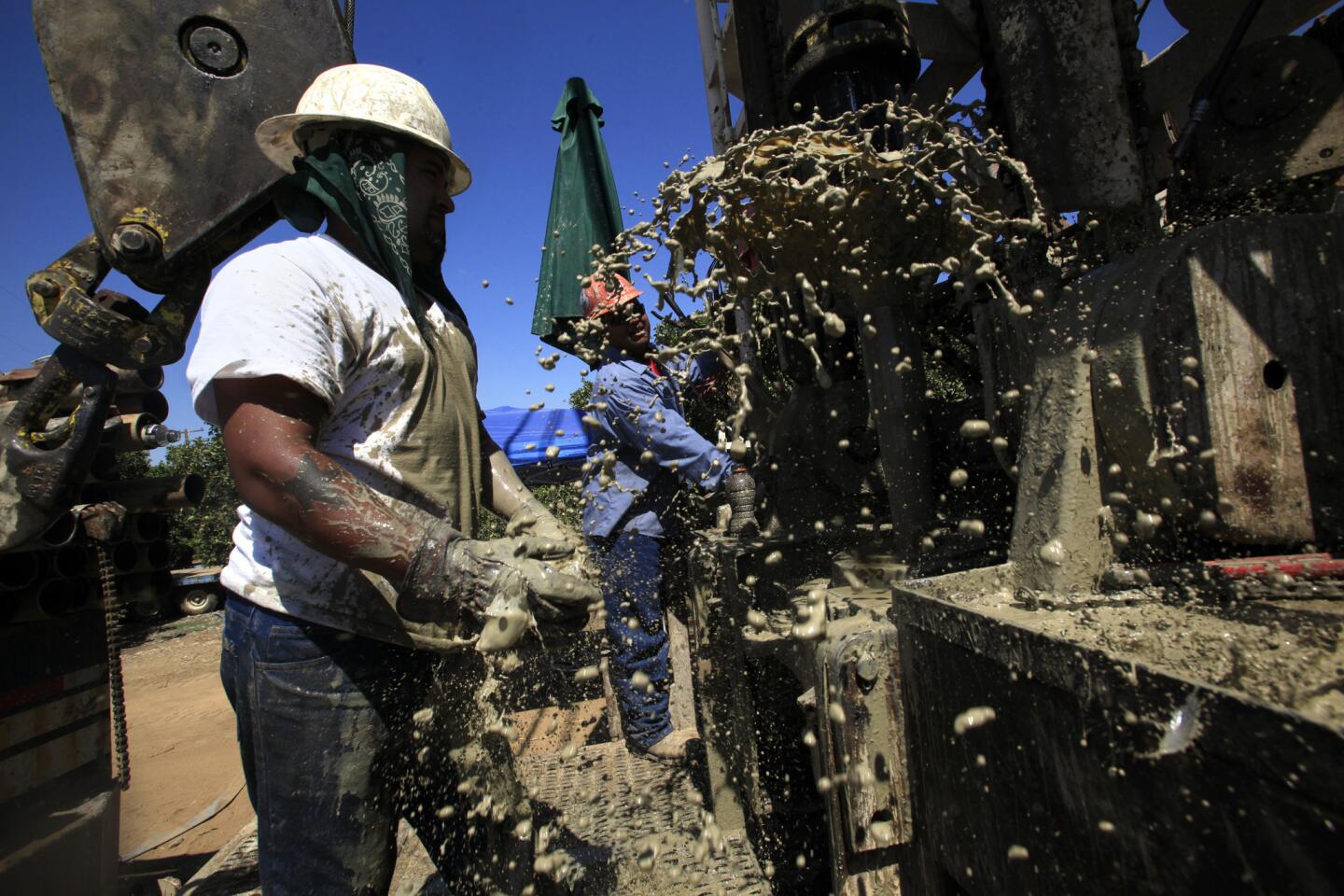As state water regulators consider extending drought restrictions though the fall, officials reported Tuesday that urban Californians had reduced their water use by 18.3% during December.
The savings, which are compared with December 2013 water usage levels, were the smallest in seven months of reporting and put California’s cumulative savings at 25.5%, down from 26.3% in November.
Gov. Jerry Brown has called for a 25% statewide reduction in urban water use between June and February to help the state cope with a years-long drought.
With about a month and a half of reporting still to come, the state finds itself just squeaking by.
State Water Resources Control Board Chairwoman Felicia Marcus asked staff members whether they believed the state would meet the 25% mandate or whether it would be a “nail-biter.”
Katheryn Landau, who presented the December data, responded that she was “cautiously optimistic.”
“We’re in field goal range, but you want a touchdown,” Marcus said.
She added later: “The fact that we’re focused on those percentages is, I think, less important than that people have really stepped up ... sometimes at extraordinary cost.”
Marcus and other water officials have said they expected savings to be lower during the colder, wetter months, when people typically use less water anyway and there is less room to cut back.
Still, the December savings effort marked the third consecutive month that Californians collectively failed to meet Brown’s goal of a 25% cutback.
1/31
More than 600 empty docks sit on dry, cracked dirt at Folsom Lake Marina, one of the largest inland marinas in California. As the state ended 2014 with no guarantee of significant rain and snow this winter, Californians face the prospect of stricter rationing and meager irrigation deliveries for agriculture.
(Allen J. Schaben / Los Angeles Times) 2/31
Researcher Blair McLaughlin, left, and Andrew Weitz, right, walk through Blue Oak trees looking for trees affected by the drought near Shandon, Calif.
(Al Seib / Los Angeles Times) 3/31
Passing storm clouds provide the backdrop for an early morning walk on the sand at the Santa Ana River inlet in Newport Beach.
(Mark Boster / Los Angeles Times) 4/31
A crew from Smartgrass Synthetic Turf rolls up a pre-measured piece of artificial grass for installation in the backyard of a home in Pacific Palisades.
(Luis Sinco / Los Angeles Times) 5/31
Rancher Bill Talbot opens a gate on his family’s leased ranch land near Bishop, Calif. Several ranchers are reducing their herds due to the drought.
(Brian van der Brug / Los Angeles Times) 6/31
As the California drought grinds into its fourth year, the barren shoreline of Shasta Lake shows the steady drop in water level. The reservoir on the Sacramento River holds about 40% of the federal Central Valley Project’s stored supply.
(Don Bartletti / Los Angeles Times) 7/31
Cindy Lazaris of the Catalina Island Conservancy walks along cracked earth that used to form the bottom of the Thompson (Middle Ranch) Reservoir, which has shrunk to a level which may cause the city of Avalon to cut its water usage by 50%.
(Bob Chamberlin / Los Angeles Times) 8/31
Los Angeles area residents could be required to cover swimming pools due to the drought.
(Robert Gauthier / Los Angeles Times) 9/31
Exposed shoreline shows low water levels at Castaic Lake.
(Robert Gauthier / Los Angeles Times) 10/31
From an inspection boat in February 2014, San Gabriel Dam operators Herbert Romero, center, and Jose Aguilar use a measuring tape to determine that the depth of San Gabriel Reservoir near the dam is 50 feet deep. The lingering drought has exposed more than 121 feet of the reservoir’s shoreline. (Don Bartletti / Los Angeles Times)
11/31
Water rings mark receding levels of the Pine Flat Reservoir. (Allen J. Schaben / Los Angeles Times)
12/31
Lack of snow in a view from Glacier Point in Yosemite National Park. (Brian van der Brug / Los Angeles Times)
13/31
Severe drought conditions reveal dry-docked boats in a parking lot and over 600 empty docks sitting on dry, cracked dirt at Folsom Lake Marina, which is one of the largest inland marinas in California. (Allen J. Schaben / Los Angeles Times)
14/31
Sunset’s glow illuminates the skyline and receding water due to severe drought conditions at Folsom Lake State Recreational Area. (Allen J. Schaben / Los Angeles Times)
15/31
The effects of California’s ongoing drought are evident in the dry, cracked banks leftover from dropping water levels at Diamond Valley Lake in Hemet. (Allen J. Schaben / Los Angeles Times)
16/31
Sunrise highlights patterns of sand that remain after the water receded at the drought-stricken Pine Flat Reservoir. (Allen J. Schaben / Los Angeles Times)
17/31
The surrounding land is testimony to the effects of drought on the depleted Pine Flat Reservoir. (Robert Gauthier / Los Angeles Times)
18/31
Irrihgation water floods the floor of a date palm grove in the Coachella Valley. The Agua Caliente Band of Cahuilla Indians’ court battle with two water agencies is one of several legal disputes over water that are being fought across California. (Don Bartletti / Los Angeles Times)
19/31
CKen Gray of the Coachella Valley Water District kneels at a flume at one of many basins at the Thomas E. Levy Groundwater Replenishment Facility. (Don Bartletti / Los Angeles Times)
20/31
Earthen patterns are left behind from the receding waters of the drought-stricken Pine Flat Reservoir. (Allen J. Schaben / Los Angeles Times)
21/31
In July 2014, marina owner Elaine Newton walks with her daughter Ashleigh Newton along docks and boat ramps that are now idle at Huntington Lake due to historically low water levels caused by the drought. (Mark Boster / Los Angeles Times)
22/31
Patchy snow is all that’s on the ground at Glacier Point in Yosemite National Park in January. The snow is normally much deeper at that time of year. (Brian van der Brug / Los Angeles Times)
23/31
In January 2014, cattle rancher Rob Frost surveys the remains of an animal that died due to drought conditions on grazing land near Santa Paula, where the grass is normally 6 to 10 inches high this time of year. Frost says in an ordinary year he will lose 1% of his cattle to natural causes but he is now losing nearly 10%. (Al Seib / Los Angeles Times)
24/31
President Obama visits Los Banos, Calif., in February 2014 to see drought conditions. (Wally Skalij / Los Angeles Times)
25/31
A lone fisherman waiting for a bite paces across a large portion of dry lake bed due to severe drought conditions at Folsom Lake. (Allen J. Schaben / Los Angeles Times)
26/31
At drought-stricken Pine Flat Reservoir in October 2014, patterns are revealed by receding waters. (Allen J. Schaben / Los Angeles Times)
27/31
Sunrise in October 2014 highlights patterns of sand amid puddles that remain at drought-stricken Pine Flat Reservoir in Sanger, Calif. (Allen J. Schaben / Los Angeles Times)
28/31
City of Santa Barbara public works department intern Devon Schmidt steps along the shoreline in February after checking the intake weir for the city’s desalination plant. (Brian van der Brug / Los Angeles Times)
29/31
In October 2014, rancher Jon Pedotti walks on the parched, cracked lake bed of his 1,561-acre ranch along San Simeon Creek in the Santa Lucia Mountain foothills of Cambria. Of the lake, which fed water to his 280 cattle, he said: “It’s never been this dry.” (Al Seib / Los Angeles Times)
30/31
A dead lawn in Parkwood, Calif., in September 2014 after a well failed and the town had to import water. (Brian van der Brug / Los Angeles Times)
31/31
Muddy water gushes out of a newly drilled well in July 2014 serving a farm in Terra Bella, Calif. (Bob Chamberlin / Los Angeles Times)
To hit that target, the water board assigned conservation standards to each of the state’s 411 urban suppliers last year.
Suppliers with a history of high per capita water use were ordered to cut as much as 36% from 2013 totals. Suppliers with a history of lower consumption were told to cut as little as 4%.
Some have struggled to meet their targets, repeatedly falling five, 10 or even 15 percentage points short. In October, regulators fined four suppliers $61,000 for noncompliance, and they have said that more penalties could be forthcoming for suppliers that don’t shape up.
Many of the hardest-hit districts have complained for months that their individual targets failed to take into account local conditions. So last month, state water board staff unveiled a modified set of drought rules that would provide suppliers with some relief.
The proposed changes to California’s emergency drought regulation reward water districts for investing in new local supplies and allow for adjustments to savings goals based on a district’s climate and population growth. The proposal allows water providers to have the so-called conservation standards reduced by as much as eight percentage points.
Collectively, officials said the adjustments and credits could drive statewide water savings below the 25% target.
Water board staff members have characterized the changes as “modest” and an attempt to be flexible in responding to water suppliers’ concerns.
But environmental groups have criticized the credits and adjustments, saying they seem to have been created to satisfy a small number of water suppliers who wanted some slack.
“I just think they’re inappropriate in the middle of an emergency,” said Sara Aminzadeh, executive director of the California Coastkeeper Alliance, which advocates for clean water. “It just sends the wrong message.”
“Californians have been asked to reduce and they stepped up to the plate,” she said. “Then nine months later … to offer these adjustments and credits is potentially confusing and undermines what we’ve done over the past year.”
Depending on how much rain and snow the state gets this winter, officials have said they could revisit the rules in March or April. They could adjust or even eliminate the restrictions at that time. A strong El Niño has already delivered some rain to California, and meteorologists say they believe more will come in February and March.
Later Tuesday, officials from the California Department of Water Resources are scheduled to take measurements of the snowpack at a station about 90 miles east of Sacramento.
Electronic readings of the statewide snowpack on Tuesday morning showed water content was 20 inches, or 114% of the historical average for that date, according to the California Department of Water Resources.
Officials have cautioned, though, that while a healthy snowpack can make a dent in the drought, it would need to be about 150% of average by April 1 to have a shot at ending the drought.
The state’s current drought regulations are scheduled to expire next week and the water board is to consider the proposed rule changes later Tuesday afternoon. If approved, the updated regulations would be in effect until October.
For more on the California drought and water, follow me on Twitter @ByMattStevens
ALSO
Atty. Gen. Kamala Harris joins those suing over Aliso Canyon gas leak
Time Warner Cable and Los Angeles resolve lawsuit over disputed fees
Port of L.A. terminal fails to comply with pollution-reduction mandates, officials say
